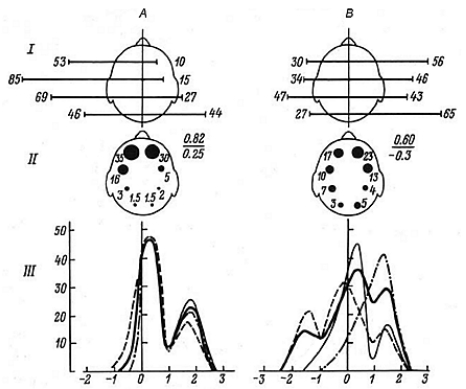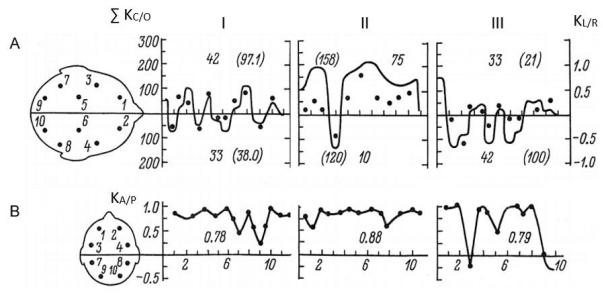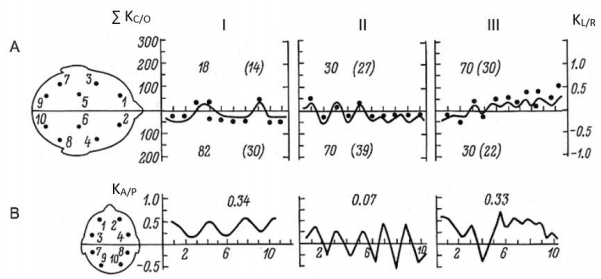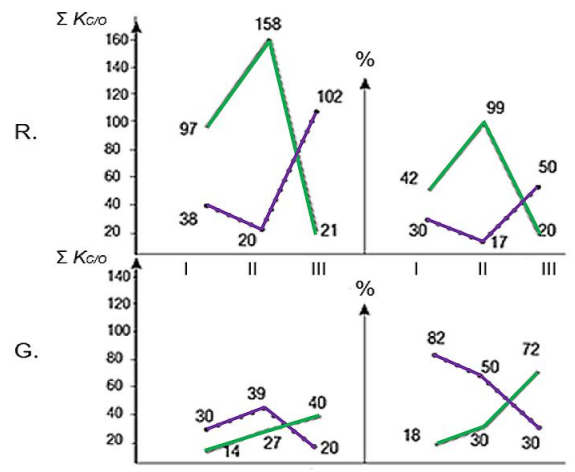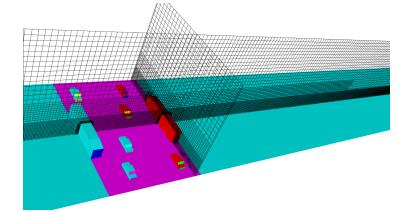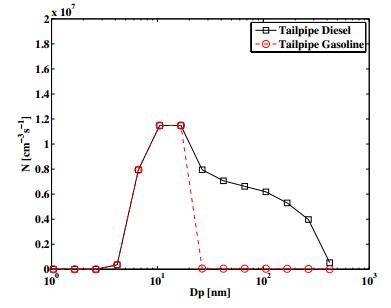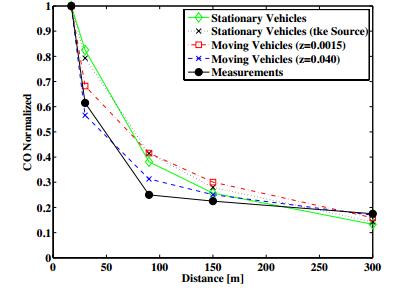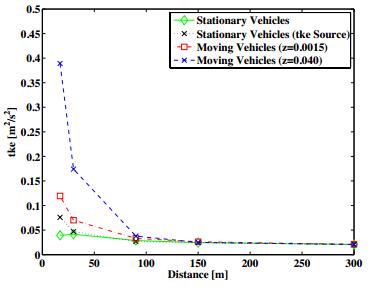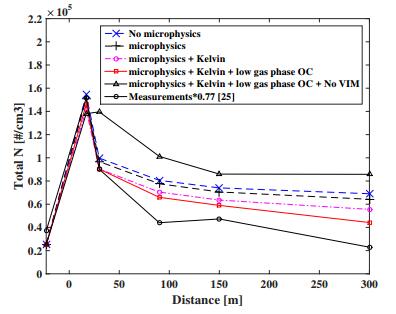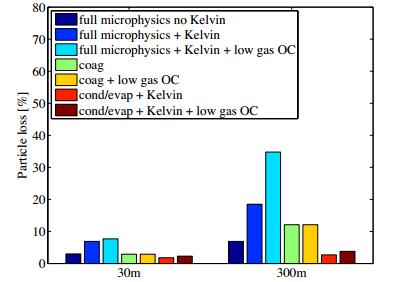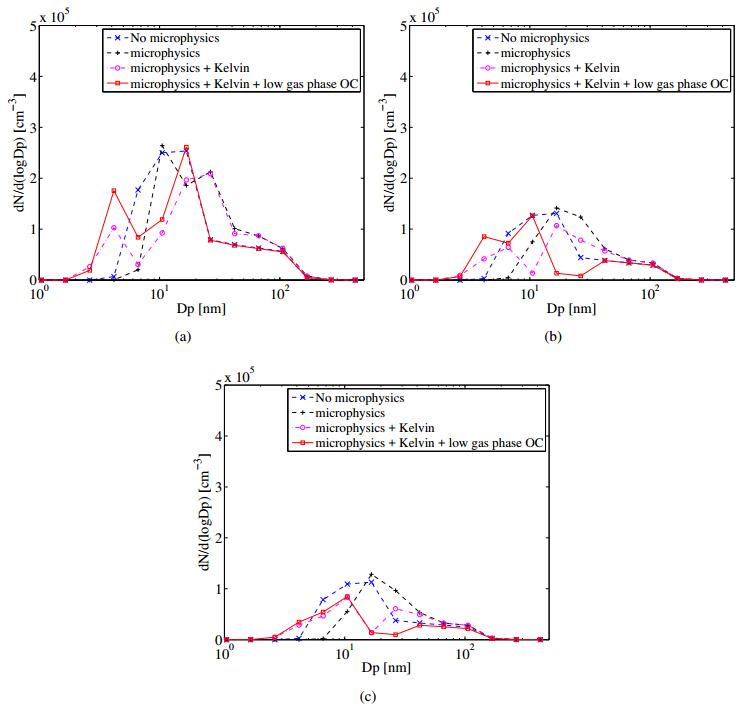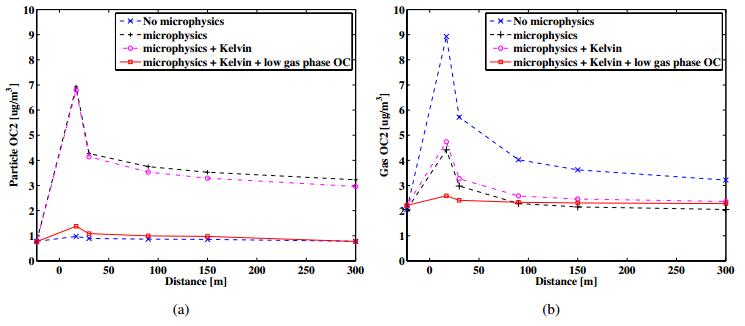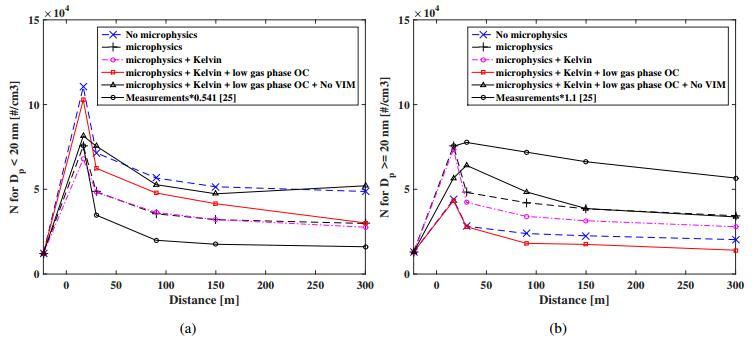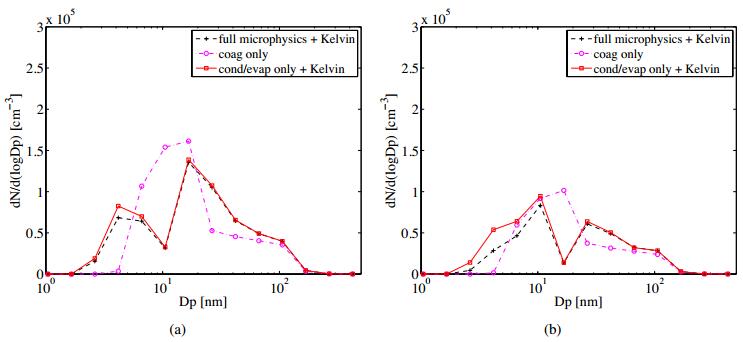| 1.
|
Natasha Doyle, Philiswa Mbandlwa, William J. Kelly, Graeme Attwood, Yang Li, R. Paul Ross, Catherine Stanton, Sinead Leahy,
Use of Lactic Acid Bacteria to Reduce Methane Production in Ruminants, a Critical Review,
2019,
10,
1664-302X,
10.3389/fmicb.2019.02207
|
|
| 2.
|
Raphael D. Ayivi, Rabin Gyawali, Albert Krastanov, Sulaiman O. Aljaloud, Mulumebet Worku, Reza Tahergorabi, Roberta Claro da Silva, Salam A. Ibrahim,
Lactic Acid Bacteria: Food Safety and Human Health Applications,
2020,
1,
2624-862X,
202,
10.3390/dairy1030015
|
|
| 3.
|
Simon Khelissa, Nour-Eddine Chihib, Adem Gharsallaoui,
Conditions of nisin production by Lactococcus lactis subsp. lactis and its main uses as a food preservative,
2021,
203,
0302-8933,
465,
10.1007/s00203-020-02054-z
|
|
| 4.
|
Wei-Kuang Lai, Ying-Chen Lu, Chun-Ren Hsieh, Chien-Kei Wei, Yi-Hong Tsai, Fang-Rong Chang, You Chan,
Developing Lactic Acid Bacteria as an Oral Healthy Food,
2021,
11,
2075-1729,
268,
10.3390/life11040268
|
|
| 5.
|
Lobna Elleuch, Olfa Ben Salem-Berrabah, Yasmin Cherni, Besma Sghaier-Hammami, Mariam Kasmi, Cristian Botta, Ikram Ouerghi, Irene Franciosa, Luca Cocolin, Ismail Trabelsi, Abdelwaheb Chatti,
A new practical approach for the biological treatment of a mixture of cheese whey and white wastewaters using Kefir grains,
2020,
27,
0944-1344,
33127,
10.1007/s11356-020-09549-8
|
|
| 6.
|
Leah B. Bushin, Brett C. Covington, Britta E. Rued, Michael J. Federle, Mohammad R. Seyedsayamdost,
Discovery and Biosynthesis of Streptosactin, a Sactipeptide with an Alternative Topology Encoded by Commensal Bacteria in the Human Microbiome,
2020,
142,
0002-7863,
16265,
10.1021/jacs.0c05546
|
|
| 7.
|
Marknoah Chinenye Nwamba, Fubao Sun, Marie Rose Mukasekuru, Guojie Song, Jean Damascene Harindintwali, Samaila Ajeje Boyi, Haiyan Sun,
Trends and hassles in the microbial production of lactic acid from lignocellulosic biomass,
2021,
21,
23521864,
101337,
10.1016/j.eti.2020.101337
|
|
| 8.
|
Amarela Terzić-Vidojević, Katarina Veljović, Maja Tolinački, Milica Živković, Jovanka Lukić, Jelena Lozo, Đorđe Fira, Branko Jovčić, Ivana Strahinić, Jelena Begović, Nikola Popović, Marija Miljković, Milan Kojić, Ljubiša Topisirović, Nataša Golić,
Diversity of non-starter lactic acid bacteria in autochthonous dairy products from Western Balkan Countries - Technological and probiotic properties,
2020,
136,
09639969,
109494,
10.1016/j.foodres.2020.109494
|
|
| 9.
|
Elisa Salvetti, Sandra Torriani, Jinshui Zheng, Sarah Lebeer, Michael G. Gänzle, Giovanna E. Felis,
2020,
9780081005965,
10.1016/B978-0-12-818766-1.00050-7
|
|
| 10.
|
Ana C. Mendes, Ioannis S. Chronakis,
Electrohydrodynamic encapsulation of probiotics: A review,
2021,
117,
0268005X,
106688,
10.1016/j.foodhyd.2021.106688
|
|
| 11.
|
Larissa Cardoso Silva, Heitor de Souza Lago, Márcia Oliveira Terra Rocha, Vanessa Sales de Oliveira, Roberto Laureano-Melo, Evandro Toledo Gerhardt Stutz, Breno Pereira de Paula, José Francisco Pereira Martins, Rosa Helena Luchese, André Fioravante Guerra, Paula Rodrigues,
Craft Beers Fermented by Potential Probiotic Yeast or Lacticaseibacilli Strains Promote Antidepressant-Like Behavior in Swiss Webster Mice,
2021,
1867-1306,
10.1007/s12602-020-09736-6
|
|
| 12.
|
Baltasar Mayo, Javier Rodríguez, Lucía Vázquez, Ana Belén Flórez,
Microbial Interactions within the Cheese Ecosystem and Their Application to Improve Quality and Safety,
2021,
10,
2304-8158,
602,
10.3390/foods10030602
|
|
| 13.
|
Sungmin Jung, Chaerin Woo, Joanna Ivy Irorita Fugaban, Jorge Enrique Vazquez Bucheli, Wilhelm Heinrich Holzapfel, Svetoslav Dimitrov Todorov,
Bacteriocinogenic Potential of Bacillus amyloliquefaciens Isolated from Kimchi, a Traditional Korean Fermented Cabbage,
2021,
1867-1306,
10.1007/s12602-021-09772-w
|
|
| 14.
|
Hoda S. El-Sayed, Heba H. Salama, Amr E. Edris,
Survival of Lactobacillus helveticus CNRZ32 in spray dried functional yogurt powder during processing and storage,
2020,
19,
1658077X,
461,
10.1016/j.jssas.2020.08.003
|
|
| 15.
|
Justina Mileriene, Loreta Serniene, Kristina Kondrotiene, Lina Lauciene, Vaida Andruleviciute, Neringa Kasetiene, Dalia Sekmokiene, Mindaugas Malakauskas,
Effect of Indigenous
Lactococcus lactis
on physicochemical and sensory properties of thermo‐coagulated acid whey protein
,
2021,
0145-8892,
10.1111/jfpp.15420
|
|
| 16.
|
Guangqiang Wang, Pengyu Chen, Xiaoqing Yu, Yongjun Xia, Li-Tang Yan, Lianzhong Ai,
C18:1 Improves the Freeze-Drying Resistance of Lactobacillus plantarum by Maintaining the Cell Membrane,
2020,
3,
2576-6422,
4933,
10.1021/acsabm.0c00444
|
|
| 17.
|
Tiara Padayachee, Nomfundo Nzuza, Wanping Chen, David R. Nelson, Khajamohiddin Syed,
Impact of lifestyle on cytochrome P450 monooxygenase repertoire is clearly evident in the bacterial phylum Firmicutes,
2020,
10,
2045-2322,
10.1038/s41598-020-70686-8
|
|
| 18.
|
Maria Carolina Mesquita, Eliana dos Santos Leandro, Ernandes Rodrigues de Alencar, Raquel Braz Assunção Botelho,
Fermentation of chickpea (Cicer arietinum L.) and coconut (Coccus nucifera L.) beverages by Lactobacillus paracasei subsp paracasei LBC 81: The influence of sugar content on growth and stability during storage,
2020,
132,
00236438,
109834,
10.1016/j.lwt.2020.109834
|
|
| 19.
|
Gacem Mohamed Amine, Hiba Gacem, Djoudi Boukerouis, Joachim Wink,
2021,
9780128219102,
361,
10.1016/B978-0-12-821910-2.00027-8
|
|
| 20.
|
Nikola Popović, Emilija Brdarić, Jelena Đokić, Miroslav Dinić, Katarina Veljović, Nataša Golić, Amarela Terzić-Vidojević,
Yogurt Produced by Novel Natural Starter Cultures Improves Gut Epithelial Barrier In Vitro,
2020,
8,
2076-2607,
1586,
10.3390/microorganisms8101586
|
|
| 21.
|
An Borremans, Ruben Smets, Leen Van Campenhout,
Fermentation Versus Meat Preservatives to Extend the Shelf Life of Mealworm (Tenebrio molitor) Paste for Feed and Food Applications,
2020,
11,
1664-302X,
10.3389/fmicb.2020.01510
|
|
| 22.
|
Erica Kosmerl, Diana Rocha-Mendoza, Joana Ortega-Anaya, Rafael Jiménez-Flores, Israel García-Cano,
Improving Human Health with Milk Fat Globule Membrane, Lactic Acid Bacteria, and Bifidobacteria,
2021,
9,
2076-2607,
341,
10.3390/microorganisms9020341
|
|
| 23.
|
Oktay YERLIKAYA, Derya SAYGILI, Asli AKPINAR,
Evaluation of antimicrobial activity and antibiotic susceptibility profiles of Lactobacillus delbrueckii subsp. bulgaricus and Streptococcus thermophilus strains isolated from commercial yoghurt starter cultures,
2020,
1678-457X,
10.1590/fst.03920
|
|
| 24.
|
Mahmoud S.M. Mohamed, Fouad M.F. Elshaghabee, Sulaiman Ali Alharbi, Ahmed El-Hussein,
The Prospective Beneficial Effects of Red Laser Exposure on Lactocaseibacillus casei Fermentation of Skim Milk,
2020,
9,
2079-7737,
256,
10.3390/biology9090256
|
|
| 25.
|
Ge Zhao, Jianming Liu, Jie Zhao, Robin Dorau, Peter Ruhdal Jensen, Christian Solem,
Efficient Production of Nisin A from Low-Value Dairy Side Streams Using a Nonengineered Dairy Lactococcus lactis Strain with Low Lactate Dehydrogenase Activity,
2021,
69,
0021-8561,
2826,
10.1021/acs.jafc.0c07816
|
|
| 26.
|
Tengku Haziyamin TENGKU ABDUL HAMİD, Nur FATİN AMYSYA,
LACTIC ACID BACTERIUM WITH ANTIMICROBIAL PROPERTIES FROM SELECTED MALAY TRADITIONAL FERMENTED FOODS,
2020,
2651-4621,
10.38001/ijlsb.781522
|
|
| 27.
|
Justina Mileriene, Loreta Serniene, Marta Henriques, David Gomes, Carlos Pereira, Kristina Kondrotiene, Neringa Kasetiene, Lina Lauciene, Dalia Sekmokiene, Mindaugas Malakauskas,
Effect of liquid whey protein concentrate–based edible coating enriched with cinnamon carbon dioxide extract on the quality and shelf life of Eastern European curd cheese,
2021,
104,
00220302,
1504,
10.3168/jds.2020-18732
|
|
| 28.
|
Gyu-Sung Cho, Olakunle Fagbemigun, Erik Brinks, Gbenga A. Adewumi, Folarin A. Oguntoyinbo, Charles M. A. P. Franz, David Rasko,
Draft Genome Sequences of Lactobacillus helveticus, Lactobacillus fermentum, and Lactobacillus delbrueckii Strains from African Fermented Nono,
2020,
9,
2576-098X,
10.1128/MRA.01342-19
|
|
| 29.
|
Jhonatan A. Hernandez-Valdes, Ana Solopova, Oscar P. Kuipers,
Development of Lactococcus lactis Biosensors for Detection of Diacetyl,
2020,
11,
1664-302X,
10.3389/fmicb.2020.01032
|
|
| 30.
|
Aneta Ciosek, Katarzyna Fulara, Olga Hrabia, Paweł Satora, Aleksander Poreda,
Chemical Composition of Sour Beer Resulting from Supplementation the Fermentation Medium with Magnesium and Zinc Ions,
2020,
10,
2218-273X,
1599,
10.3390/biom10121599
|
|
| 31.
|
LUÍS AUGUSTO NERO, CAIO FIALHO de FREITAS, LARA MARIA VIEIRA FLORES CARVALHO, CRISTINA CONSTANTINO,
3M Petrifilm Lactic Acid Bacteria Count Plate Is a Reliable Tool for Enumerating Lactic Acid Bacteria in Bacon,
2020,
83,
0362-028X,
1757,
10.4315/JFP-20-155
|
|
| 32.
|
Adriana Criste, Lucian Copolovici, Dana Copolovici, Melinda Kovacs, Robert H. Madden, Nicolae Corcionivoschi, Ozan Gundogdu, Mihaela Berchez, Adriana Cristina Urcan, Jasbir Singh Bedi,
Determination of changes in the microbial and chemical composition of Țaga cheese during maturation,
2020,
15,
1932-6203,
e0242824,
10.1371/journal.pone.0242824
|
|
| 33.
|
Alex MacLean, Anondo Bley, Vasu D. Appanna,
2021,
9780128200841,
101,
10.1016/B978-0-12-820084-1.00005-3
|
|
| 34.
|
María del Pilar Angarita-Díaz, Johanna C. Arias, Claudia Bedoya-Correa, María J. Cepeda, María F. Arboleda, Juan M. Chacón, Yenny Leal,
The effect of commercial functional food with probiotics on microorganisms from early carious lesions,
2020,
10,
2045-2322,
10.1038/s41598-020-67775-z
|
|
| 35.
|
Cécile Philippe, Amel Chaïb, Fety Jaomanjaka, Olivier Claisse, Patrick M. Lucas, Johan Samot, Christian Cambillau, Claire Le Marrec,
Characterization of the First Virulent Phage Infecting Oenococcus oeni, the Queen of the Cellars,
2021,
11,
1664-302X,
10.3389/fmicb.2020.596541
|
|
| 36.
|
Carla Martín, Iván Fernández-Vega, Juan E. Suárez, Luis M. Quirós,
Adherence of Lactobacillus salivarius to HeLa Cells Promotes Changes in the Expression of the Genes Involved in Biosynthesis of Their Ligands,
2020,
10,
1664-3224,
10.3389/fimmu.2019.03019
|
|
| 37.
|
Ranjana Sharma, Prakrati Garg, Pradeep Kumar, Shashi Kant Bhatia, Saurabh Kulshrestha,
Microbial Fermentation and Its Role in Quality Improvement of Fermented Foods,
2020,
6,
2311-5637,
106,
10.3390/fermentation6040106
|
|
| 38.
|
Larissa P. Margalho, Marcelo D'Elia Feliciano, Christian E. Silva, Júlia S. Abreu, Marcos Vinícius Fiorentini Piran, Anderson S. Sant'Ana,
Brazilian artisanal cheeses are rich and diverse sources of nonstarter lactic acid bacteria regarding technological, biopreservative, and safety properties—Insights through multivariate analysis,
2020,
103,
00220302,
7908,
10.3168/jds.2020-18194
|
|
| 39.
|
Kaidi Peng, Mohamed Koubaa, Olivier Bals, Eugène Vorobiev,
Effect of Pulsed Electric Fields on the Growth and Acidification Kinetics of Lactobacillus delbrueckii Subsp. bulgaricus,
2020,
9,
2304-8158,
1146,
10.3390/foods9091146
|
|
| 40.
|
Yingying Hu, Lang Zhang, Rongxin Wen, Qian Chen, Baohua Kong,
Role of lactic acid bacteria in flavor development in traditional Chinese fermented foods: A review,
2020,
1040-8398,
1,
10.1080/10408398.2020.1858269
|
|
| 41.
|
Hyun-Wook Baek, Seul-Ah Kim, Won-Ki Min, Shin Dal Kang, Sangmin Shim, Nam Soo Han, Jin-Ho Seo,
A Species-Specific qPCR Method for Enumeration of Lactobacillus sanfranciscensis, Lactobacillus brevis, and Lactobacillus curvatus During Cocultivation in Sourdough,
2021,
14,
1936-9751,
750,
10.1007/s12161-020-01920-2
|
|
| 42.
|
María Jesús Rodríguez-Sojo, Antonio Jesús Ruiz-Malagón, María Elena Rodríguez-Cabezas, Julio Gálvez, Alba Rodríguez-Nogales,
Limosilactobacillus fermentum CECT5716: Mechanisms and Therapeutic Insights,
2021,
13,
2072-6643,
1016,
10.3390/nu13031016
|
|
| 43.
|
Sepideh Gharehyakheh,
Gamma aminobutyric acid (GABA) production using
Lactobacillus
sp.
Makhdzir Naser‐1
(GQ451633) in the cherry‐kefir beverage
,
2021,
0145-8892,
10.1111/jfpp.15521
|
|
| 44.
|
Nasim Khorshidian, Mojtaba Yousefi, Neda Mollakhalili Meybodi, Amir M. Mortazavian,
2021,
9780128185889,
259,
10.1016/B978-0-12-818588-9.00018-8
|
|
| 45.
|
S.C. Ribeiro, M.C. Coelho, C.C.G. Silva,
A rapid screening method to evaluate acidifying activity by lactic acid bacteria,
2021,
185,
01677012,
106227,
10.1016/j.mimet.2021.106227
|
|
| 46.
|
Edwin Hlangwani, Patrick Berka Njobeh, Chiemela Enyinnaya Chinma, Ajibola Bamikole Oyedeji, Beatrice Mofoluwaso Fasogbon, Samson Adeoye Oyeyinka, Sunday Samuel Sobowale, Olayemi Eyituoyo Dudu, Tumisi Beiri Jeremiah Molelekoa, Hema Kesa, Jonathan D. Wilkin, Oluwafemi Ayodeji Adebo,
2023,
9780323983419,
15,
10.1016/B978-0-323-98341-9.00031-1
|
|
| 47.
|
Ilias Apostolakos, Spiros Paramithiotis, Marios Mataragas,
Functional and Safety Characterization of Weissella paramesenteroides Strains Isolated from Dairy Products through Whole-Genome Sequencing and Comparative Genomics,
2022,
3,
2624-862X,
799,
10.3390/dairy3040055
|
|
| 48.
|
Heng Li, Nancy E. Ramia, Frédéric Borges, Anne-Marie Revol-Junelles, Finn Kvist Vogensen, Jørgen J. Leisner,
Identification of Potential Citrate Metabolism Pathways in Carnobacterium maltaromaticum,
2021,
9,
2076-2607,
2169,
10.3390/microorganisms9102169
|
|
| 49.
|
Asli Akpinar, Oktay Yerlikaya,
Some potential beneficial properties of
Lacticaseibacillus paracasei
subsp.
paracasei
and
Leuconostoc mesenteroides
strains originating from raw milk and kefir grains
,
2021,
45,
0145-8892,
10.1111/jfpp.15986
|
|
| 50.
|
Gabriele Rocchetti, Annalisa Rebecchi, Michele Dallolio, Gianpaolo Braceschi, Rubén Domínguez, Giuliano Dallolio, Marco Trevisan, José M. Lorenzo, Luigi Lucini,
Changes in the chemical and sensory profile of ripened Italian salami following the addition of different microbial starters,
2021,
180,
03091740,
108584,
10.1016/j.meatsci.2021.108584
|
|
| 51.
|
Abel T. Ingle, Nathaniel W. Fortney, Kevin A. Walters, Timothy J. Donohue, Daniel R. Noguera,
Mixed Acid Fermentation of Carbohydrate-Rich Dairy Manure Hydrolysate,
2021,
9,
2296-4185,
10.3389/fbioe.2021.724304
|
|
| 52.
|
Konstantin V. Moiseenko, Anna V. Begunova, Olga S. Savinova, Olga A. Glazunova, Irina V. Rozhkova, Tatyana V. Fedorova,
Biochemical and Genomic Characterization of Two New Strains of Lacticaseibacillus paracasei Isolated from the Traditional Corn-Based Beverage of South Africa, Mahewu, and Their Comparison with Strains Isolated from Kefir Grains,
2023,
12,
2304-8158,
223,
10.3390/foods12010223
|
|
| 53.
|
Harpreet Kaur, Gurjeet Kaur, Syed Azmal Ali,
Dairy-Based Probiotic-Fermented Functional Foods: An Update on Their Health-Promoting Properties,
2022,
8,
2311-5637,
425,
10.3390/fermentation8090425
|
|
| 54.
|
Ricardo V. Duarte, Carlos A. Pinto, Ana M. Gomes, Ivonne Delgadillo, Jorge A. Saraiva,
A microbiological perspective of raw milk preserved at room temperature using hyperbaric storage compared to refrigerated storage,
2022,
78,
14668564,
103019,
10.1016/j.ifset.2022.103019
|
|
| 55.
|
Charles Obinwanne Okoye, Ke Dong, Yongli Wang, Lu Gao, Xia Li, Yanfang Wu, Jianxiong Jiang,
Comparative genomics reveals the organic acid biosynthesis metabolic pathways among five lactic acid bacterial species isolated from fermented vegetables,
2022,
70,
18716784,
73,
10.1016/j.nbt.2022.05.001
|
|
| 56.
|
Jiangli Wu, Wenkang Hu, Yongde Zeng, Zhengbin Yang, xuefeng zeng,
Effect of Flours Addition on the Physicochemical and Metabolome in Suanjiang, a Chinese Traditional Fermentation Coagulant,
2023,
1556-5068,
10.2139/ssrn.4350082
|
|
| 57.
|
S. H. Sandez Penidez, M. A. Velasco Manini, C. L. Gerez, G. C. Rollan,
Consortia of lactic acid bacteria strains increase the antioxidant activity and bioactive compounds of quinoa sourdough - based biscuits,
2023,
39,
0959-3993,
10.1007/s11274-023-03538-y
|
|
| 58.
|
Sargun Malik, Kiruba Krishnaswamy, Azlin Mustapha,
Development and functional characterization of complementary food using kodo and proso millet with acid whey from Greek yogurt processing,
2022,
46,
0145-8892,
10.1111/jfpp.16051
|
|
| 59.
|
Rania Anastasiou, Maria Kazou, Marina Georgalaki, Anastasios Aktypis, Georgia Zoumpopoulou, Effie Tsakalidou,
Omics Approaches to Assess Flavor Development in Cheese,
2022,
11,
2304-8158,
188,
10.3390/foods11020188
|
|
| 60.
|
Alessandro Bianchi, Isabella Taglieri, Francesca Venturi, Chiara Sanmartin, Giuseppe Ferroni, Monica Macaluso, Fabrizio Palla, Guido Flamini, Angela Zinnai,
Technological Improvements on FML in the Chianti Classico Wine Production: Co-Inoculation or Sequential Inoculation?,
2022,
11,
2304-8158,
1011,
10.3390/foods11071011
|
|
| 61.
|
Elena Nikitina, Tatyana Petrova, Adel Vafina, Asya Ezhkova, Monyr Nait Yahia, Airat Kayumov,
Textural and Functional Properties of Skimmed and Whole Milk Fermented by Novel Lactiplantibacillus plantarum AG10 Strain Isolated from Silage,
2022,
8,
2311-5637,
290,
10.3390/fermentation8060290
|
|
| 62.
|
Yuwei Sun, Shiyao Zhang, Hong Li, Jiang Zhu, Zhijia Liu, Xiaosong Hu, Junjie Yi,
Assessments of Probiotic Potentials of Lactiplantibacillus plantarum Strains Isolated From Chinese Traditional Fermented Food: Phenotypic and Genomic Analysis,
2022,
13,
1664-302X,
10.3389/fmicb.2022.895132
|
|
| 63.
|
Esther Alonso García, Juan José de la Fuente Ordoñez, Leyre Lavilla Lerma, María D. Estudillo-Martínez, Sonia Castillo-Gutiérrez, Nabil Benomar, Charles W. Knapp, Hikmate Abriouel,
Transcriptomic Profile and Probiotic Properties of Lactiplantibacillus pentosus Pre-adapted to Edible Oils,
2021,
12,
1664-302X,
10.3389/fmicb.2021.747043
|
|
| 64.
|
Pooja Attri, Drukshakshi Jodha, Poonam Bansal, Jasbir Singh, Suman Dhanda,
Membrane Bound Aminopeptidase B of a Potential Probiotic Pediococcus acidilactici NCDC 252: Purification, Physicochemical and Kinetic Characterization,
2021,
27,
1573-3149,
1641,
10.1007/s10989-021-10197-w
|
|
| 65.
|
Wanida Pan-utai, Sitanan Thitiprasert, Soisuda Pornpukdeewattana,
Arthrospira Cell Residues for Lactic Acid Fermentation as Bioproducts From Waste Utilization,
2022,
10,
2296-598X,
10.3389/fenrg.2022.878597
|
|
| 66.
|
Raquel Muelas, Gema Romero, José Ramón Díaz, Paula Monllor, Juana Fernández-López, Manuel Viuda-Martos, Marina Cano-Lamadrid, Esther Sendra,
Quality and Functional Parameters of Fermented Milk Obtained from Goat Milk Fed with Broccoli and Artichoke Plant By-Products,
2022,
11,
2304-8158,
2601,
10.3390/foods11172601
|
|
| 67.
|
Jheng-Jhe Lu, Meng-Chun Cheng, Darin Khumsupan, Chen-Che Hsieh, Chang-Wei Hsieh, Kuan-Chen Cheng,
Evaluation of Fermented Turmeric Milk by Lactic Acid Bacteria to Prevent UV-Induced Oxidative Stress in Human Fibroblast Cells,
2023,
9,
2311-5637,
230,
10.3390/fermentation9030230
|
|
| 68.
|
Yu Hsuan How, Michelle Yee Mun Teo, Lionel Lian Aun In, Siok Koon Yeo, Liew Phing Pui,
Development of fermented milk using food-grade recombinant Lactococcus lactis NZ3900,
2022,
28,
23523646,
1,
10.1016/j.nfs.2022.07.001
|
|
| 69.
|
Joaquín Estrada-García, Eduardo Hernández-Aguilar, Diana I. Romero-Mota, Juan M. Méndez-Contreras,
Influence of anaerobic biotransformation process of agro-industrial waste with Lactobacillus acidophilus on the rheological parameters: case of study of pig manure,
2023,
205,
0302-8933,
10.1007/s00203-023-03437-8
|
|
| 70.
|
Wending Chen, Caiyun Xie, Qianqian He, Jianxia Sun, Weibin Bai,
Improvement in color expression and antioxidant activity of strawberry juice fermented with lactic acid bacteria: A phenolic-based research,
2023,
17,
25901575,
100535,
10.1016/j.fochx.2022.100535
|
|
| 71.
|
Muhammad Junaid, Saima Inayat, Nabila Gulzar, Anjum Khalique, Faisal Shahzad, Irfan Irshad, Muhammad Imran,
Physical, chemical, microbial, and sensory evaluation and fatty acid profiling of value-added drinking yogurt (laban) under various storage conditions,
2023,
106,
00220302,
39,
10.3168/jds.2022-22358
|
|
| 72.
|
Hassan Zafar, Milton H. Saier Jr.,
Comparative Analyses of the Transport Proteins Encoded within the Genomes of nine Bifidobacterium Species,
2022,
32,
2673-1665,
30,
10.1159/000518954
|
|
| 73.
|
Sang-Hee Lee, Ah-Ram Han, Byoung-Mok Kim, Mi Sung, Sun-Mee Hong,
Lactococcus lactis‑fermented spinach juice suppresses LPS‑induced expression of adhesion molecules and inflammatory cytokines through the NF‑κB pathway in HUVECs,
2022,
23,
1792-0981,
10.3892/etm.2022.11317
|
|
| 74.
|
Elena Bartkiene, Romas Gruzauskas, Modestas Ruzauskas, Egle Zokaityte, Vytaute Starkute, Dovile Klupsaite, Laurynas Vadopalas, Sarunas Badaras, Fatih Özogul,
Changes in the Microbial Community and Biogenic Amine Content in Rapeseed Meal during Fermentation with an Antimicrobial Combination of Lactic Acid Bacteria Strains,
2022,
8,
2311-5637,
136,
10.3390/fermentation8040136
|
|
| 75.
|
Ho Myeong Kim, Seul-Gi Jeong, In Min Hwang, Hae Woong Park,
Efficient Citrus (Citrus unshiu) Byproduct Extract-Based Approach forLactobacillus sakeiWiKim31 Shelf-Life Extension,
2021,
6,
2470-1343,
35334,
10.1021/acsomega.1c04335
|
|
| 76.
|
U Suryadi, R T Hertamawati, S Imam,
Fermented meat and digestive tract of snail as amino acid supplements for functional feed of native chickens,
2022,
980,
1755-1307,
012020,
10.1088/1755-1315/980/1/012020
|
|
| 77.
|
Guangqiang Wei, Qiong Zhao, Yanan Shi, Aixiang Huang,
Characteristic flavour compounds and formation of Chinese Rubing cheese: Comparative study between two different acidification technologies,
2022,
75,
1364-727X,
405,
10.1111/1471-0307.12851
|
|
| 78.
|
Sadia Ahmed, Fatima Ashraf, Muhammad Tariq, Arsalan Zaidi,
Aggrandizement of fermented cucumber through the action of autochthonous probiotic cum starter strains of Lactiplantibacillus plantarum and Pediococcus pentosaceus,
2021,
71,
1590-4261,
10.1186/s13213-021-01645-5
|
|
| 79.
|
Alexandre J.K. Ouamba, Mérilie Gagnon, Gisèle LaPointe, P. Yvan Chouinard, Denis Roy,
Graduate Student Literature Review: Farm management practices: Potential microbial sources that determine the microbiota of raw bovine milk,
2022,
105,
00220302,
7276,
10.3168/jds.2021-21758
|
|
| 80.
|
Anna Łepecka, Anna Okoń, Piotr Szymański, Dorota Zielińska, Katarzyna Kajak-Siemaszko, Danuta Jaworska, Katarzyna Neffe-Skocińska, Barbara Sionek, Monika Trząskowska, Danuta Kołożyn-Krajewska, Zbigniew J. Dolatowski,
The Use of Unique, Environmental Lactic Acid Bacteria Strains in the Traditional Production of Organic Cheeses from Unpasteurized Cow’s Milk,
2022,
27,
1420-3049,
1097,
10.3390/molecules27031097
|
|
| 81.
|
Sneh Punia Bangar, Shweta Suri, Monica Trif, Fatih Ozogul,
Organic acids production from lactic acid bacteria: A preservation approach,
2022,
46,
22124292,
101615,
10.1016/j.fbio.2022.101615
|
|
| 82.
|
Agne Vasiliauskaite, Justina Mileriene, Epp Songisepp, Ida Rud, Sandra Muizniece-Brasava, Inga Ciprovica, Lars Axelsson, Liis Lutter, Elvidas Aleksandrovas, Ene Tammsaar, Joana Salomskiene, Loreta Serniene, Mindaugas Malakauskas,
Application of Edible Coating Based on Liquid Acid Whey Protein Concentrate with Indigenous Lactobacillus helveticus for Acid-Curd Cheese Quality Improvement,
2022,
11,
2304-8158,
3353,
10.3390/foods11213353
|
|
| 83.
|
Felix Shih-Hsiang Hsiao, Clara Ajeng Artdita, Shih-Yao Lin, Yu-Hsiang Yu, Yeong-Hsiang Cheng,
Mixed Solid-State Fermentation of Okara and Copra Meal by Probiotics with Non-Starch Polysaccharide Enzymes and Its Effects on the Growth Performance and Ileal Microbiota in Broilers,
2022,
8,
2311-5637,
478,
10.3390/fermentation8100478
|
|
| 84.
|
MaryClaire Chamberlain, Sarah O'Flaherty, Natalia Cobián, Rodolphe Barrangou,
Metabolomic Analysis of Lactobacillus acidophilus, L. gasseri, L. crispatus, and Lacticaseibacillus rhamnosus Strains in the Presence of Pomegranate Extract,
2022,
13,
1664-302X,
10.3389/fmicb.2022.863228
|
|
| 85.
|
Ann L. Power, Daniel G. Barber, Sophie R. M. Groenhof, Sariqa Wagley, Ping Liu, David A. Parker, John Love,
The Application of Imaging Flow Cytometry for Characterisation and Quantification of Bacterial Phenotypes,
2021,
11,
2235-2988,
10.3389/fcimb.2021.716592
|
|
| 86.
|
Lucía Vázquez, Ana Belén Flórez, Javier Rodríguez, Baltasar Mayo,
Heterologous expression of equol biosynthesis genes from Adlercreutzia equolifaciens
,
2021,
368,
1574-6968,
10.1093/femsle/fnab082
|
|
| 87.
|
Hsean Ren Loi, Sahar Abbasiliasi, Pandian Bothi Raja, Mohd Shamzi Mohamed, Wen-Nee Tan, Hui Suan Ng, John Chi-Wei Lan, Joo Shun Tan,
Biosynthesis of silver nanoparticles using nitrate reductase produced by Lactobacillus plantarum CAM 4: Characterization and in vitro evaluation of its antimicrobial efficiency,
2023,
376,
01677322,
121476,
10.1016/j.molliq.2023.121476
|
|
| 88.
|
Kritika Sharma, Sarita Bhawanani, Deepak Sharma, Gunjan Goel,
Selection of indigenous Lacticaseibacillus paracasei CD 4 for production of gluten-free traditional fermented product Bhaturu,
2022,
36,
0890-5436,
76,
10.1080/08905436.2021.2007395
|
|
| 89.
|
Sara Tejedor-Sanz, Eric T Stevens, Siliang Li, Peter Finnegan, James Nelson, Andre Knoesen, Samuel H Light, Caroline M Ajo-Franklin, Maria L Marco,
Extracellular electron transfer increases fermentation in lactic acid bacteria via a hybrid metabolism,
2022,
11,
2050-084X,
10.7554/eLife.70684
|
|
| 90.
|
Aicha Yasmine Belarbi, Otávio G. G. de Almeida, Veronica Gatto, Sandra Torriani, Beatriz del Rio, Victor Ladero, Begoña Redruello, Farid Bensalah, Miguel A. Alvarez,
Investigating the biotechnological potential of lactic acid bacteria strains isolated from different Algerian dairy and farm sources,
2022,
204,
0302-8933,
10.1007/s00203-022-02828-7
|
|
| 91.
|
Mohammadhassan Gholami-Shabani, Masoomeh Shams-Ghahfarokhi, Mehdi Razzaghi-Abyaneh,
2023,
10.5772/intechopen.109729
|
|
| 92.
|
Irene Martín, Alicia Rodríguez, Josué Delgado, Juan J. Córdoba,
Strategies for Biocontrol of Listeria monocytogenes Using Lactic Acid Bacteria and Their Metabolites in Ready-to-Eat Meat- and Dairy-Ripened Products,
2022,
11,
2304-8158,
542,
10.3390/foods11040542
|
|
| 93.
|
Santosh Kumar Tiwari,
Bacteriocin-Producing Probiotic Lactic Acid Bacteria in Controlling Dysbiosis of the Gut Microbiota,
2022,
12,
2235-2988,
10.3389/fcimb.2022.851140
|
|
| 94.
|
Katarzyna Petka, Paweł Sroka, Tomasz Tarko, Aleksandra Duda-Chodak,
The Acrylamide Degradation by Probiotic Strain Lactobacillus acidophilus LA-5,
2022,
11,
2304-8158,
365,
10.3390/foods11030365
|
|
| 95.
|
Ahmed Adebisi Otunba, Akinniyi Adediran Osuntoki, Wahab Okunowo, Daniel Kolawole Olukoya, Benjamin Ayodipupo Babalola,
Characterization of novel bacteriocin PB2 and comprehensive detection of the pediocin gene ped-A1 from Pediococcus pentosaceus PB2 strain isolated from a sorghum-based fermented beverage in Nigeria,
2022,
36,
2215017X,
e00772,
10.1016/j.btre.2022.e00772
|
|
| 96.
|
Mónica María Durango-Zuleta, Mayra Fuentes-Vanegas, José Uriel Sepúlveda-Valencia, Claudia Ximena Moreno Herrera,
Isolation, identification, and antimicrobial activity of lactic acid bacteria associated with two traditional Colombian types of cheese: Quesillo and double-cream cheese,
2022,
171,
00236438,
114119,
10.1016/j.lwt.2022.114119
|
|
| 97.
|
Xianqi Peng, Abdelaziz Ed-Dra, Min Yue,
Whole genome sequencing for the risk assessment of probiotic lactic acid bacteria,
2022,
1040-8398,
1,
10.1080/10408398.2022.2087174
|
|
| 98.
|
Seda Hacıoglu, Buket Kunduhoglu,
Probiotic Characteristics of Lactobacillus brevis KT38-3 Isolated from an Artisanal Tulum Cheese,
2021,
41,
2636-0772,
967,
10.5851/kosfa.2021.e49
|
|
| 99.
|
J.I.I. Fugaban, J.E. Vazquez Bucheli, B. Kim, W.H. Holzapfel, S.D. Todorov,
Safety and beneficial properties of bacteriocinogenic
Pediococcus acidilactici
and
Pediococcus pentosaceus
isolated from silage
,
2021,
73,
0266-8254,
725,
10.1111/lam.13562
|
|
| 100.
|
Oluwole Steve Ijarotimi, Opeyemi Rachael Fagoroye, Timilehin David Oluwajuyitan,
Jute seed bioactive compounds: amino acids, polyphenolics, antioxidants and hydrolyzing enzymes inhibitory property,
2023,
3,
27725669,
183,
10.1016/j.jfutfo.2022.12.010
|
|
| 101.
|
Elena Bartkiene, Egle Zokaityte, Vytaute Starkute, Ernestas Mockus, Dovile Klupsaite, Justina Lukseviciute, Alina Bogomolova, Audrone Streimikyte, Fatih Ozogul,
Biopreservation of Wild Edible Mushrooms (Boletus edulis, Cantharellus, and Rozites caperata) with Lactic Acid Bacteria Possessing Antimicrobial Properties,
2022,
11,
2304-8158,
1800,
10.3390/foods11121800
|
|
| 102.
|
Amélia Delgado, Nadia Chammem, Manel Issaoui, Emna Ammar,
2022,
Chapter 10-1,
978-3-030-63961-7,
1,
10.1007/978-3-030-63961-7_10-1
|
|
| 103.
|
Haritha Meruvu, Sebnem Tellioglu Harsa,
Lactic acid bacteria: isolation–characterization approaches and industrial applications,
2022,
1040-8398,
1,
10.1080/10408398.2022.2054936
|
|
| 104.
|
Urszula Zarzecka, Anna Zadernowska, Wioleta Chajęcka-Wierzchowska, Patryk Adamski,
High-pressure processing effect on conjugal antibiotic resistance genes transfer in vitro and in the food matrix among strains from starter cultures,
2023,
388,
01681605,
110104,
10.1016/j.ijfoodmicro.2023.110104
|
|
| 105.
|
Sawsen Hadef, Tayeb Idoui, Mohamed Sifour, Magali Genay, Annie Dary-Mourot,
Screening of Wild Lactic Acid Bacteria from Algerian Traditional Cheeses and Goat Butter to Develop a New Probiotic Starter Culture,
2022,
1867-1306,
10.1007/s12602-022-10000-2
|
|
| 106.
|
Dipanwita Bhattacharya, Pramod Kumar Nanda, Mirian Pateiro, José M. Lorenzo, Pubali Dhar, Arun K. Das,
Lactic Acid Bacteria and Bacteriocins: Novel Biotechnological Approach for Biopreservation of Meat and Meat Products,
2022,
10,
2076-2607,
2058,
10.3390/microorganisms10102058
|
|
| 107.
|
Aileen Pua, Vivien Chia Yen Tang, Rui Min Vivian Goh, Jingcan Sun, Benjamin Lassabliere, Shao Quan Liu,
Ingredients, Processing, and Fermentation: Addressing the Organoleptic Boundaries of Plant-Based Dairy Analogues,
2022,
11,
2304-8158,
875,
10.3390/foods11060875
|
|
| 108.
|
Wuyundalai Bao, Yuxing He, Jinghe Yu, Xiaofeng Yang, Mingchao Liu, Rimutu Ji,
Diversity analysis and gene function prediction of bacteria and fungi of Bactrian camel milk and naturally fermented camel milk from Alxa in Inner Mongolia,
2022,
169,
00236438,
114001,
10.1016/j.lwt.2022.114001
|
|
| 109.
|
Dorota Zielińska, Katarzyna Marciniak-Lukasiak, Marcelina Karbowiak, Piotr Lukasiak,
Effects of Fructose and Oligofructose Addition on Milk Fermentation Using Novel Lactobacillus Cultures to Obtain High-Quality Yogurt-like Products,
2021,
26,
1420-3049,
5730,
10.3390/molecules26195730
|
|
| 110.
|
Melda ONUR, Harun ÖNLÜ,
Farklı Gıda Ürünlerinden İzole Edilen Laktik Asit Bakterilerinin Bazı Probiyotik Özelliklerinin Belirlenmesi,
2022,
2148-2683,
10.31590/ejosat.1041277
|
|
| 111.
|
Xiaojie Zhou, Zhiqi Liu, Le Xie, Liangyi Li, Wenhua Zhou, Liangzhong Zhao,
The Correlation Mechanism between Dominant Bacteria and Primary Metabolites during Fermentation of Red Sour Soup,
2022,
11,
2304-8158,
341,
10.3390/foods11030341
|
|
| 112.
|
Chrysa Anagnostopoulou, Konstantinos N. Kontogiannopoulos, Maria Gaspari, Maria Silvia Morlino, Andreana N. Assimopoulou, Panagiotis G. Kougias,
Valorization of household food wastes to lactic acid production: A response surface methodology approach to optimize fermentation process,
2022,
296,
00456535,
133871,
10.1016/j.chemosphere.2022.133871
|
|
| 113.
|
Birsen Yilmaz, Sneh Punia Bangar, Noemi Echegaray, Shweta Suri, Igor Tomasevic, Jose Manuel Lorenzo, Ebru Melekoglu, João Miguel Rocha, Fatih Ozogul,
The Impacts of Lactiplantibacillus plantarum on the Functional Properties of Fermented Foods: A Review of Current Knowledge,
2022,
10,
2076-2607,
826,
10.3390/microorganisms10040826
|
|
| 114.
|
Caroline Isabel Kothe, Nacer Mohellibi, Pierre Renault,
Revealing the microbial heritage of traditional Brazilian cheeses through metagenomics,
2022,
157,
09639969,
111265,
10.1016/j.foodres.2022.111265
|
|
| 115.
|
Pallabi Banerjee, Imteyaz Qamar,
2022,
9780323857932,
93,
10.1016/B978-0-323-85793-2.00002-3
|
|
| 116.
|
Ronit Suissa, Rela Oved, Harsh Maan, Uzi Hadad, Omri Gilhar, Michael M. Meijler, Omry Koren, Ilana Kolodkin-Gal,
Context-dependent differences in the functional responses of Lactobacillaceae strains to fermentable sugars,
2022,
13,
1664-302X,
10.3389/fmicb.2022.949932
|
|
| 117.
|
Ana Belén Flórez, Lucía Vázquez, Javier Rodríguez, Baltasar Mayo,
Phenotypic and Safety Assessment of the Cheese Strain Lactiplantibacillus plantarum LL441, and Sequence Analysis of its Complete Genome and Plasmidome,
2022,
24,
1422-0067,
605,
10.3390/ijms24010605
|
|
| 118.
|
Luís Cláudio Lima de Jesus, Tales Fernando da Silva, Rafael de Assis Glória, Andria dos Santos Freitas, Monique Ferrary Américo, Lucas Jorge da Silva Fernandes, Gabriela Munis Campos, Gabriel Camargos Gomes, Rhayane Cristina Viegas Santos, Rodrigo Dias de Oliveira Carvalho, Debmalya Barh, Vasco Azevedo,
2022,
9780128222386,
373,
10.1016/B978-0-12-822238-6.00008-X
|
|
| 119.
|
Dayanidhi Satish Kumar, Palanisamy Venkatachalam,
Probing of an Appreciable Antimicrobial Compound Producing Lactobacillus Strain from Milk Products of Thanjavur Region, Tamil Nadu and its Enhanced Production,
2022,
19,
24562602,
917,
10.13005/bbra/3041
|
|
| 120.
|
Fanny Canon, Marie-Bernadette Maillard, Marie-Hélène Famelart, Anne Thierry, Valérie Gagnaire,
Mixed dairy and plant-based yogurt alternatives: Improving their physical and sensorial properties through formulation and lactic acid bacteria cocultures,
2022,
5,
26659271,
665,
10.1016/j.crfs.2022.03.011
|
|
| 121.
|
Eugénie Kayitesi, Ogheneyoma Onojakpor, Siphosanele Mafa Moyo,
Highlighting the Impact of Lactic-Acid-Bacteria-Derived Flavours or Aromas on Sensory Perception of African Fermented Cereals,
2023,
9,
2311-5637,
111,
10.3390/fermentation9020111
|
|
| 122.
|
Jiahui Liang, Michelle Ji Yeon Yoo, Brent Seale, Gianpaolo Grazioli,
Nutritional and Volatile Characterisation of Milk Inoculated with Thermo-Tolerant Lactobacillus bulgaricus through Adaptive Laboratory Evolution,
2021,
10,
2304-8158,
2944,
10.3390/foods10122944
|
|
| 123.
|
Patrycja Cichońska, Małgorzata Ziarno,
Legumes and Legume-Based Beverages Fermented with Lactic Acid Bacteria as a Potential Carrier of Probiotics and Prebiotics,
2021,
10,
2076-2607,
91,
10.3390/microorganisms10010091
|
|
| 124.
|
Aabid Manzoor Shah, Najeebul Tarfeen, Hassan Mohamed, Yuanda Song,
Fermented Foods: Their Health-Promoting Components and Potential Effects on Gut Microbiota,
2023,
9,
2311-5637,
118,
10.3390/fermentation9020118
|
|
| 125.
|
Hirosuke Sugahara, Keitaro Nagayama, Shiori Ikeda, Tatsuhiko Hirota, Yasunori Nakamura,
D- and l-amino acid concentrations in culture broth of Lactobacillus are highly dependent on the phylogenetic group of Lactobacillus,
2021,
27,
24055808,
101073,
10.1016/j.bbrep.2021.101073
|
|
| 126.
|
Mehran Sayadi, Ali Mojaddar Langroodi, Dornoush Jafarpour,
Impact of zein coating impregnated with ginger extract and Pimpinella anisum essential oil on the shelf life of bovine meat packaged in modified atmosphere,
2021,
15,
2193-4126,
5231,
10.1007/s11694-021-01096-1
|
|
| 127.
|
Mehrsa Emkani, Bonastre Oliete, Rémi Saurel,
Effect of Lactic Acid Fermentation on Legume Protein Properties, a Review,
2022,
8,
2311-5637,
244,
10.3390/fermentation8060244
|
|
| 128.
|
Urszula Zarzecka, Wioleta Chajęcka-Wierzchowska, Anna Zadernowska,
Microorganisms from starter and protective cultures - Occurrence of antibiotic resistance and conjugal transfer of tet genes in vitro and during food fermentation,
2022,
153,
00236438,
112490,
10.1016/j.lwt.2021.112490
|
|
| 129.
|
Yizengaw Mengesha, Alemu Tebeje, Belay Tilahun, James Owusu-Kwarteng,
A Review on Factors Influencing the Fermentation Process of Teff (Eragrostis teff) and Other Cereal-Based Ethiopian Injera,
2022,
2022,
2314-5765,
1,
10.1155/2022/4419955
|
|
| 130.
|
Morgan Le Rouzic, Pauline Bruniaux, Cyril Raveschot, François Krier, Vincent Phalip, Rozenn Ravallec, Benoit Cudennec, François Coutte,
2022,
10.5772/intechopen.104958
|
|
| 131.
|
Jiakuan Niu, Xiao Liu, Junying Xu, Fen Li, Jincan Wang, Xixi Zhang, Xu Yang, Lin Wang, Sen Ma, Defeng Li, Xiaoyan Zhu, Chengzhang Wang, Yinghua Shi, Yalei Cui, Ilenys M. Perez-Diaz,
Effects of Silage Diet on Meat Quality through Shaping Gut Microbiota in Finishing Pigs,
2023,
11,
2165-0497,
10.1128/spectrum.02416-22
|
|
| 132.
|
Nazan Kavas,
Functional probiotic yoghurt production with royal jelly fortification and determination of some properties,
2022,
28,
1878450X,
100519,
10.1016/j.ijgfs.2022.100519
|
|
| 133.
|
Amira M. G. Darwish, Marwa G. Allam, Enaam S. Shokery, Eman H. E. Ayad, Muhammad Hussnain Siddique,
Functional products fortified with probiotic LAB isolated from Egyptian dairy sources showed hypolipidemic effects in Albino rats,
2022,
17,
1932-6203,
e0263241,
10.1371/journal.pone.0263241
|
|
| 134.
|
Kemal Sener, Banu Arslan, Sultan Ozselcuk, Ramazan Guven,
Resistant Lactic Acidemia Due to Accidental Cheese Starter Culture Ingestion,
2022,
60,
07356757,
228.e1,
10.1016/j.ajem.2022.07.046
|
|
| 135.
|
Jegadeesh Raman, Jeong-Seon Kim, Kyeong Rok Choi, Hyunmin Eun, Dongsoo Yang, Young-Joon Ko, Soo-Jin Kim,
Application of Lactic Acid Bacteria (LAB) in Sustainable Agriculture: Advantages and Limitations,
2022,
23,
1422-0067,
7784,
10.3390/ijms23147784
|
|
| 136.
|
D.B.T. Amadarshanie, T.L. Gunathilaka, Rajitha M. Silva, S.B. Navaratne, L. Dinithi C. Peiris,
Functional and antiglycation properties of cow milk set yogurt enriched with Nyctanthes arbor-tristis L. flower extract,
2022,
154,
00236438,
112910,
10.1016/j.lwt.2021.112910
|
|
| 137.
|
A Djukic-Vuković, D Mladenovic, B Lakicevic, L Mojovic,
Lactic acid bacteria: from food preservation to active packaging,
2021,
854,
1755-1307,
012025,
10.1088/1755-1315/854/1/012025
|
|
| 138.
|
Yanni Pan, Yujing Ning, Jing Hu, Zhiying Wang, Xiufeng Chen, Xin Zhao, Mateusz Maciejczyk,
The Preventive Effect of Lactobacillus plantarum ZS62 on DSS-Induced IBD by Regulating Oxidative Stress and the Immune Response,
2021,
2021,
1942-0994,
1,
10.1155/2021/9416794
|
|
| 139.
|
Vera Ganina, Natalia Mashentseva, Inna Ionova,
Bacteriophages of Lactic Acid Bacteria,
2022,
52,
2074-9414,
361,
10.21603/2074-9414-2022-2-2371
|
|
| 140.
|
Poonam Bansal, Raman Kumar, Suman Dhanda,
Characterization of starter cultures and nutritional properties of
Pediococcus acidilactici
NCDC
252: A potential probiotic of dairy origin
,
2022,
46,
0145-8892,
10.1111/jfpp.16817
|
|
| 141.
|
Lucía Diez-Gutiérrez, Leire San Vicente, Jessica Sáenz, Argitxu Esquivel, Luis Javier R. Barron, María Chávarri,
Biosynthesis of gamma-aminobutyric acid by Lactiplantibacillus plantarum K16 as an alternative to revalue agri-food by-products,
2022,
12,
2045-2322,
10.1038/s41598-022-22875-w
|
|
| 142.
|
M. Ibarlucea-Jerez, M.C. Canivenc-Lavier, E. Beuvier, P. Barbet, F. Menetrier, E. Neyraud, H. Licandro,
Persistence of fermented food bacteria in the oral cavity of rats after one week of consumption,
2022,
107,
07400020,
104087,
10.1016/j.fm.2022.104087
|
|
| 143.
|
Shuai Guo, Meixuan Chen, Ting Wu, Kailong Liu, Heping Zhang, Jicheng Wang,
Probiotic Bifidobacterium animalis ssp. lactis Probio-M8 improves the properties and organic acid metabolism of fermented goat milk,
2022,
105,
00220302,
9426,
10.3168/jds.2022-22003
|
|
| 144.
|
Mirjana Ž. Grujović, Katarina G. Mladenović, Teresa Semedo‐Lemsaddek, Marta Laranjo, Olgica D. Stefanović, Sunčica D. Kocić‐Tanackov,
Advantages and disadvantages of non‐starter lactic acid bacteria from traditional fermented foods: Potential use as starters or probiotics,
2022,
21,
1541-4337,
1537,
10.1111/1541-4337.12897
|
|
| 145.
|
Hafize Fidan, Tuba Esatbeyoglu, Vida Simat, Monica Trif, Giulia Tabanelli, Tina Kostka, Chiara Montanari, Salam A. Ibrahim, Fatih Özogul,
Recent developments of lactic acid bacteria and their metabolites on foodborne pathogens and spoilage bacteria: Facts and gaps,
2022,
47,
22124292,
101741,
10.1016/j.fbio.2022.101741
|
|
| 146.
|
Guillermo Eduardo Sedó Molina, Radhakrishna Shetty, Hang Xiao, Anders Peter Wätjen, Miguel Tovar, Claus Heiner Bang-Berthelsen,
Development of a novel lactic acid bacteria starter culture approach: From insect microbiome to plant-based fermentations,
2022,
167,
00236438,
113797,
10.1016/j.lwt.2022.113797
|
|
| 147.
|
Hee Seo, Hyunbin Seong, Ga Yun Kim, Yu Mi Jo, Seong Won Cheon, Youngju Song, Byung Hee Ryu, Hee Kang, Nam Soo Han,
Development of Anti-inflammatory Probiotic Limosilactobacillus reuteri EFEL6901 as Kimchi Starter: in vitro and In vivo Evidence,
2021,
12,
1664-302X,
10.3389/fmicb.2021.760476
|
|
| 148.
|
Epp Songisepp, Jelena Stsepetova, Merle Rätsep, Liina Kuus, Anneli Piir, Kalle Kilk, Marika Mikelsaar,
Polyfunctional metabolic properties of the human strain Lactiplantibacillus plantarum Inducia (DSM 21379): Experimental and clinical approaches,
2022,
92,
17564646,
105064,
10.1016/j.jff.2022.105064
|
|
| 149.
|
Javier Rodríguez, Lucía Vázquez, Ana Belén Flórez, Baltasar Mayo,
Phenotype testing, genome analysis, and metabolic interactions of three lactic acid bacteria strains existing as a consortium in a naturally fermented milk,
2022,
13,
1664-302X,
10.3389/fmicb.2022.1000683
|
|
| 150.
|
Renpeng Du, Liansheng Yu, Ningxin Yu, Wenxiang Ping, Gang Song, Jingping Ge,
Characterization of exopolysaccharide produced by Levilactobacillus brevis HDE-9 and evaluation of its potential use in dairy products,
2022,
217,
01418130,
303,
10.1016/j.ijbiomac.2022.07.057
|
|
| 151.
|
Justina Mileriene, Loreta Serniene, Beatrice Kasparaviciene, Lina Lauciene, Neringa Kasetiene, Gintare Zakariene, Milda Kersiene, Daiva Leskauskaite, Jonas Viskelis, Yiannis Kourkoutas, Mindaugas Malakauskas,
Exploring the Potential of Sustainable Acid Whey Cheese Supplemented with Apple Pomace and GABA-Producing Indigenous Lactococcus lactis Strain,
2023,
11,
2076-2607,
436,
10.3390/microorganisms11020436
|
|
| 152.
|
Nazan Kavas,
Yogurt-like product from lupine (Lupinus albus L.) milk as an alternative to dairy products,
2022,
2308-4057,
377,
10.21603/2308-4057-2022-2-546
|
|
| 153.
|
Ahmed Osman, Clara Berenike Hartung, Jan Berend Lingens, Kerstin Rohn, Tom Schreiner, Marwa Fawzy Elmetwaly Ahmed, Julia Hankel, Amr Abd El-Wahab, Christian Visscher,
Fermentation Characteristics of Rye and Sorghum Depending on Water:Feed Ratio,
2022,
8,
2311-5637,
155,
10.3390/fermentation8040155
|
|
| 154.
|
Márcia C. Coelho, Francisco Xavier Malcata, Célia C. G. Silva,
Lactic Acid Bacteria in Raw-Milk Cheeses: From Starter Cultures to Probiotic Functions,
2022,
11,
2304-8158,
2276,
10.3390/foods11152276
|
|
| 155.
|
R Malaka, F Maruddin, S Baco, M Ridwan, W Hakim, I L Maria, A Alimuddin, Z Dwyana,
Determination of the expiration time of Dangke ripening cheese through physico-chemical and microbiological analysis,
2021,
788,
1755-1307,
012094,
10.1088/1755-1315/788/1/012094
|
|
| 156.
|
Heena Sharma, Fatih Ozogul, Elena Bartkiene, João Miguel Rocha,
Impact of lactic acid bacteria and their metabolites on the techno-functional properties and health benefits of fermented dairy products,
2021,
1040-8398,
1,
10.1080/10408398.2021.2007844
|
|
| 157.
|
Tulsi Kumari Joishy, Mojibur Rohman Khan,
2023,
Chapter 17,
978-981-19-5040-7,
327,
10.1007/978-981-19-5041-4_17
|
|
| 158.
|
Giuseppe Mannino, Graziella Serio, Raimondo Gaglio, Gabriele Busetta, Lorenza La Rosa, Antonino Lauria, Luca Settanni, Carla Gentile,
Phytochemical Profile and Antioxidant, Antiproliferative, and Antimicrobial Properties of Rubus idaeus Seed Powder,
2022,
11,
2304-8158,
2605,
10.3390/foods11172605
|
|
| 159.
|
Eva-H. Dulf, Dan C. Vodnar, Alex Danku, Adrian Gheorghe Martău, Bernadette-Emőke Teleky, Francisc V. Dulf, Mohamed Fawzy Ramadan, Ovidiu Crisan,
Mathematical Modeling and Optimization of Lactobacillus Species Single and Co-Culture Fermentation Processes in Wheat and Soy Dough Mixtures,
2022,
10,
2296-4185,
10.3389/fbioe.2022.888827
|
|
| 160.
|
Rintaro Sato, Motoyuki Ikeda, Tomonari Tanaka, Hitomi Ohara, Yuji Aso,
Production of R- and S-1,2-propanediol in engineered Lactococcus lactis,
2021,
11,
2191-0855,
10.1186/s13568-021-01276-8
|
|
| 161.
|
Hock Wei Tang, Pongsathon Phapugrangkul, Hafizuddin Mohamed Fauzi, Joo Shun Tan,
Lactic Acid Bacteria Bacteriocin, an Antimicrobial Peptide Effective Against Multidrug Resistance: a Comprehensive Review,
2022,
28,
1573-3149,
10.1007/s10989-021-10317-6
|
|
| 162.
|
Mei-Ying Huang, Chia-Yi Lo, Cheng-Yu Lai, Jong-Ding Yu, Po-Tsang Lee,
Dietary supplementation of synbiotic Leuconostoc mesenteroide B4 and dextran improves immune regulation and disease resistance of Penaeus vannamei against Vibrio parahaemolyticus,
2023,
132,
10504648,
108498,
10.1016/j.fsi.2022.108498
|
|
| 163.
|
Atieh Darbandi, Arezoo Asadi, Marzieh Mahdizade Ari, Elnaz Ohadi, Malihe Talebi, Masoume Halaj Zadeh, Amir Darb Emamie, Roya Ghanavati, Maryam Kakanj,
Bacteriocins: Properties and potential use as antimicrobials,
2022,
36,
0887-8013,
10.1002/jcla.24093
|
|
| 164.
|
Xinyang Sun, Simiao Wu, Wen Li, Filiz Koksel, Yifei Du, Lei Sun, Yong Fang, Qiuhui Hu, Fei Pei,
The effects of cooperative fermentation by yeast and lactic acid bacteria on the dough rheology, retention and stabilization of gas cells in a whole wheat flour dough system – A review,
2023,
135,
0268005X,
108212,
10.1016/j.foodhyd.2022.108212
|
|
| 165.
|
Javier Rodríguez, Ana González-Guerra, Lucía Vázquez, Raúl Fernández-López, Ana Belén Flórez, Fernando de la Cruz, Baltasar Mayo,
Isolation and phenotypic and genomic characterization of Tetragenococcus spp. from two Spanish traditional blue-veined cheeses made of raw milk,
2022,
371,
01681605,
109670,
10.1016/j.ijfoodmicro.2022.109670
|
|
| 166.
|
Simon Sauer, Leon Dlugosch, Felix Milke, Thorsten Brinkhoff, Dietmar R. Kammerer, Florian C. Stintzing, Meinhard Simon,
Succession of Bacterial and Fungal Communities during Fermentation of Medicinal Plants,
2022,
8,
2311-5637,
383,
10.3390/fermentation8080383
|
|
| 167.
|
Yu Eun Cheong, Jungyeon Kim, Yong-Su Jin, Kyoung Heon Kim,
Elucidation of the fucose metabolism of probiotic Lactobacillus rhamnosus GG by metabolomic and flux balance analyses,
2022,
360,
01681656,
110,
10.1016/j.jbiotec.2022.11.002
|
|
| 168.
|
Charles Obinwanne Okoye, Yongli Wang, Lu Gao, Yanfang Wu, Xia Li, Jianzhong Sun, Jianxiong Jiang,
The performance of lactic acid bacteria in silage production: A review of modern biotechnology for silage improvement,
2023,
266,
09445013,
127212,
10.1016/j.micres.2022.127212
|
|
| 169.
|
Kirsi Savijoki, Paola San-Martin-Galindo, Katriina Pitkänen, Minnamari Edelmann, Annika Sillanpää, Cim van der Velde, Ilkka Miettinen, Jayendra Z. Patel, Jari Yli-Kauhaluoma, Mataleena Parikka, Adyary Fallarero, Pekka Varmanen,
Food-Grade Bacteria Combat Pathogens by Blocking AHL-Mediated Quorum Sensing and Biofilm Formation,
2022,
12,
2304-8158,
90,
10.3390/foods12010090
|
|
| 170.
|
Sreejita Ghosh, Moupriya Nag, Dibyajit Lahiri, Tanmay Sarkar, Siddhartha Pati, Zulhisyam Abdul Kari, Nilesh P. Nirmal, Hisham Atan Edinur, Rina Rani Ray,
Engineered Biofilm: Innovative Nextgen Strategy for Quality Enhancement of Fermented Foods,
2022,
9,
2296-861X,
10.3389/fnut.2022.808630
|
|
| 171.
|
Ingrid Teixeira Akamine, Felipe R. P. Mansoldo, Alane Beatriz Vermelho,
Probiotics in the Sourdough Bread Fermentation: Current Status,
2023,
9,
2311-5637,
90,
10.3390/fermentation9020090
|
|
| 172.
|
Subhrakantra Jena, Smita Hasini Panda,
2023,
9780323983419,
85,
10.1016/B978-0-323-98341-9.00024-4
|
|
| 173.
|
Nuthathai Sutthiwong, Supaporn Lekavat, Laurent Dufossé,
Involvement of Versatile Bacteria Belonging to the Genus Arthrobacter in Milk and Dairy Products,
2023,
12,
2304-8158,
1270,
10.3390/foods12061270
|
|
| 174.
|
Gengan Du, Yudie Qing, Huanzi Wang, Na Wang, Tianli Yue, Yahong Yuan,
Effects of Tibetan kefir grain fermentation on the physicochemical properties, phenolics, enzyme activity, and antioxidant activity of Lycium barbarum (Goji berry) juice,
2023,
53,
22124292,
102555,
10.1016/j.fbio.2023.102555
|
|
| 175.
|
Olaide Olawunmi Ajibola, Raymond Thomas, Babatunde Femi Bakare,
Selected fermented indigenous vegetables and fruits from Malaysia as potential sources of natural probiotics for improving gut health,
2023,
12,
22134530,
1493,
10.1016/j.fshw.2023.02.011
|
|
| 176.
|
Amélia Delgado, Nadia Chammem, Manel Issaoui, Emna Ammar,
2023,
Chapter 10,
978-3-030-91380-9,
197,
10.1007/978-3-030-91381-6_10
|
|
| 177.
|
Cristina Mihaela Nicolescu, Marius Bumbac, Claudia Lavinia Buruleanu, Elena Corina Popescu, Sorina Geanina Stanescu, Andreea Antonia Georgescu, Siramona Maria Toma,
Biopolymers Produced by Lactic Acid Bacteria: Characterization and Food Application,
2023,
15,
2073-4360,
1539,
10.3390/polym15061539
|
|
| 178.
|
Joana F. Fangueiro, Nelson Mota de Carvalho, Filipa Antunes, Inês F. Mota, Manuela Estevez Pintado, Ana Raquel Madureira, Patrícia Santos Costa,
Lignin from sugarcane bagasse as a prebiotic additive for poultry feed,
2023,
01418130,
124262,
10.1016/j.ijbiomac.2023.124262
|
|
| 179.
|
John Samelis, Charikleia Tsanasidou, Loulouda Bosnea, Charikleia Ntziadima, Ilias Gatzias, Athanasia Kakouri, Dimitrios Pappas,
Pilot-Scale Production of Traditional Galotyri PDO Cheese from Boiled Ewes’ Milk Fermented with the Aid of Greek Indigenous Lactococcus lactis subsp. cremoris Starter and Lactiplantibacillus plantarum Adjunct Strains,
2023,
9,
2311-5637,
345,
10.3390/fermentation9040345
|
|
| 180.
|
Diana Ibeth Romero-Mota, Joaquín Estrada-García, Alejandro Alvarado-Lassman, Juan Manuel Méndez-Contreras,
Growth kinetics of Lactobacillus acidophilus During the Anaerobic Biotransformation Process of Agro-Sugarcane Waste,
2023,
1877-2641,
10.1007/s12649-023-02100-z
|
|
| 181.
|
Guillermo Ortiz Charneco, Paul P. de Waal, Irma M.H. van Rijswijck, Noël N.M.E. van Peij, Douwe van Sinderen, Jennifer Mahony,
Bacteriophages in the Dairy Industry: A Problem Solved?,
2023,
14,
1941-1413,
367,
10.1146/annurev-food-060721-015928
|
|
| 182.
|
Kambhampati Vivek, Chandrasekar Venkitasamy,
2023,
Chapter 3,
978-981-19-9102-8,
71,
10.1007/978-981-19-9103-5_3
|
|
| 183.
|
Bianca de Oliveira Hosken, Gilberto Vinícius Melo Pereira, Thamylles Thuany Mayrink Lima, João Batista Ribeiro, Walter Coelho Pereira de Magalhães Júnior, José Guilherme Prado Martin,
Underexplored Potential of Lactic Acid Bacteria Associated with Artisanal Cheese Making in Brazil: Challenges and Opportunities,
2023,
9,
2311-5637,
409,
10.3390/fermentation9050409
|
|
| 184.
|
Yueqi Wang, Qian Chen, Laihao Li, Shengjun Chen, Yongqiang Zhao, Chunsheng Li, Huan Xiang, Yanyan Wu, Dongxiao Sun‐Waterhouse,
Transforming the fermented fish landscape: Microbiota enable novel, safe, flavorful, and healthy products for modern consumers,
2023,
1541-4337,
10.1111/1541-4337.13208
|
|
| 185.
|
Thisari A Bandara, Srimali P Munasinghe‐Arachchige, Charitha J Gamlath,
Fermented whey beverages: A review of process fundamentals, recent developments and nutritional potential,
2023,
1364-727X,
10.1111/1471-0307.12993
|
|
| 186.
|
Pawade Mohit Manoj, Jenekar Rahi Mohan, Bhosale Yuvraj Khasherao, Rafeeya Shams, Kshirod K. Dash,
Fruit based probiotic functional beverages: A review,
2023,
14,
26661543,
100729,
10.1016/j.jafr.2023.100729
|
|
| 187.
|
Galina Sviridenko, Olga Shukhalova, Denis Mamykin,
Development and Acid Formation of Lactococci at Technically Significant Temperatures: Comparative Analysis,
2023,
1019-8946,
71,
10.21603/1019-8946-2023-6-18
|
|
| 188.
|
Özge Kahraman-Ilıkkan,
Comparative genomics of four lactic acid bacteria identified with Vitek MS (MALDI-TOF) and whole-genome sequencing,
2024,
299,
1617-4615,
10.1007/s00438-024-02129-2
|
|
| 189.
|
John Loughrin, Getahun Agga, Nanh Lovanh,
Simple Sugars Alter the Odorant Composition of Dairy Cow Manure,
2024,
11,
2076-3298,
145,
10.3390/environments11070145
|
|
| 190.
|
Xi Wang, Fucan Li, Xiaorui Cai, Yanling Huang, Haitao Shi,
Exploring the combination of wilting and different types of additives to improve silage quality of highland alfalfa: Fermentation quality, nutritional values, molecular structural features, and ruminal degradability,
2024,
318,
03778401,
116123,
10.1016/j.anifeedsci.2024.116123
|
|
| 191.
|
Volodymyr Vovkotrub, Inga Kowalewska, Ewa Czerniawska-Piątkowska, Olha Iakubchak, Julia Hryb,
Modern methods of raw meat processing to reduce microbial contamination,
2024,
15,
2663967X,
55,
10.31548/veterinary3.2024.55
|
|
| 192.
|
|
|
| 193.
|
Sha-sha Zheng, Ying-ying Hu, Li-jun Tan, Liu Yang, Chun-yu Wang, Bao-cai Xu,
Innovative insights into dry fermented sausages flavor: Unraveling the impact of varied lactobacillus genera-driven fermentation,
2024,
60,
22124292,
104331,
10.1016/j.fbio.2024.104331
|
|
| 194.
|
Yoiner K. Lapiz-Culqui, Jegnes Benjamín Meléndez-Mori, José Jesús Tejada-Alvarado, Denny Cortez, Eyner Huaman, Victor M. Núñez Zarantes, Manuel Oliva,
Study of the physicochemical characteristics, antimicrobial activity, and in vitro multiplication of wild blackberry species from the Peruvian highlands,
2024,
14,
2045-2322,
10.1038/s41598-024-54058-0
|
|
| 195.
|
Zhenyu Liu, Rong Hu, Lunjie Huang, Yunhao Lu, Zhenghong Xu, Yuanlong Chi,
Lactic acid bacteria with weak post-acidification potential applied for low-salt paocai fermentation: A perspective from screening to molecular mechanism,
2024,
206,
00236438,
116531,
10.1016/j.lwt.2024.116531
|
|
| 196.
|
Gokul Priya Thangavelu, Anand Raj Dhanapal, Ramkumar Samynathan, Baskar Venkidasamy, Muthu Thiruvengadam, Andrey Nagdalian, Mohammad Ali Shariati,
2024,
9780443153464,
259,
10.1016/B978-0-443-15346-4.00010-0
|
|
| 197.
|
Hocine Remini, Yasmine Remini-Sahraoui, Tassadit Benbara, Djamila Sadoun,
From farm to cheeseboard: Harnessing the biopreserving performance and enhancing safety of Lactococcus lactis KJ660075 in goat's milk cheese,
2024,
157,
09586946,
105977,
10.1016/j.idairyj.2024.105977
|
|
| 198.
|
Xueqi Lu, Mengying Sun, Yuqing Chen, Dashuai He, Yanfeng Tuo, Guangqing Mu, Yinglong Song,
Effect of the quorum sensing signal molecule auto-inducer-2 on fermentation performance of Lactobacillus delbrueckii subsp. Bulgaricus DPUL-F36,
2024,
62,
22124292,
105346,
10.1016/j.fbio.2024.105346
|
|
| 199.
|
Tracy Ann Bruce-Tagoe, Shyju Bhaskar, Ruchita Rao Kavle, Jaison Jeevanandam, Caleb Acquah, Godfred Ohemeng-Boahen, Dominic Agyei, Michael K. Danquah,
Advances in aptamer-based biosensors for monitoring foodborne pathogens,
2024,
61,
0022-1155,
1252,
10.1007/s13197-023-05889-8
|
|
| 200.
|
Xiang-ao Li, Yumeng Sui, Jiasheng Lu, Jing Ren, Baohua Kong, Yongjie Li, Qian Chen, Weiwei Yang,
Compensative role of autochthonous lactic acid bacteria in physical properties and taste profiles of dry sausage with partial substitution of NaCl by KCl,
2024,
199,
00236438,
116115,
10.1016/j.lwt.2024.116115
|
|
| 201.
|
Kübra Küçükgöz, Marcin Kruk, Danuta Kołożyn-Krajewska, Monika Trząskowska,
Investigating the Probiotic Potential of Vegan Puree Mixture: Viability during Simulated Digestion and Bioactive Compound Bioaccessibility,
2024,
16,
2072-6643,
561,
10.3390/nu16040561
|
|
| 202.
|
Yuliya Pronina, Talgat Kulazhanov, Zhanar Nabiyeva, Olga Belozertseva, Anastasiya Burlyayeva, Alberto Cepeda, Erik Askarbekov, Gulzhan Urazbekova, Elmira Bazylkhanova,
Development of a Technology for Protein-Based, Glueless Belevskaya Pastille with Study of the Impact of Probiotic Sourdough Dosage and Technological Parameters on Its Rheological Properties,
2023,
12,
2304-8158,
3700,
10.3390/foods12193700
|
|
| 203.
|
Sachin Kumar, Sourabh Kumar, Swati Mitharwal, Abhishek Chandra, Prabhat Kumar Nema,
Effect of different concentrations of thermoprotectant on microencapsulation of Lactobacillus rhamnosus GG by spray-drying, and its effect on physicochemical properties and viability,
2023,
30,
2231-7546,
1066,
10.47836/ifrj.30.4.22
|
|
| 204.
|
Natsag Lkhagvasuren, Gil-Ha Kim, Batchimeg Namshir, Woan Sub Kim,
Antibacterial Activity against Pathogenic Bacteria of
Lactiplantibacillus argentratensis Isolated from
Blueberries,
2023,
41,
2733-4554,
191,
10.22424/jdsb.2023.41.4.191
|
|
| 205.
|
Carmen Miramontes-Corona, Abraham Cetina-Corona, María Esther Macías-Rodríguez, Alfredo Escalante, Rosa Isela Corona-González, Guillermo Toriz,
Lactic Acid Bacterial Fermentation of Esterified Agave Fructans in Simulated Physicochemical Colon Conditions for Local Delivery of Encapsulated Drugs,
2024,
10,
2311-5637,
478,
10.3390/fermentation10090478
|
|
| 206.
|
Charu Tripathi, Jaya Malhotra, Jasvinder Kaur,
Employing Food and Industrial Microbiology to Accelerate Sustainable Development Goals,
2022,
1,
25835327,
22,
10.59118/IFJF3014
|
|
| 207.
|
José Alejandro Valenzuela, Lucía Vázquez, Javier Rodríguez, Ana Belén Flórez, Olga M. Vasek, Baltasar Mayo,
Phenotypic, Technological, Safety, and Genomic Profiles of Gamma-Aminobutyric Acid-Producing Lactococcus lactis and Streptococcus thermophilus Strains Isolated from Cow’s Milk,
2024,
25,
1422-0067,
2328,
10.3390/ijms25042328
|
|
| 208.
|
Xuefei Shao, Huhu Wang, Xiangyu Song, Na Xu, Linlin Cai, Jian Sun, Xinglian Xu,
Decoding the flavor regulation mechanism of fermented sausages inoculated with indigenous strains via metagenomic and GC-MS analysis,
2024,
206,
00236438,
116604,
10.1016/j.lwt.2024.116604
|
|
| 209.
|
Turkson Antwi Boasiako, Aregbe Afusat Yinka, Xiong Yuqing, Isaac Duah Boateng, Yongkun Ma,
Tri-cultured lactic-acetic acid co-fermentation improves stored jujube puree functionality, physicochemical, volatile compounds, and sensory characteristics,
2024,
57,
22124292,
103534,
10.1016/j.fbio.2023.103534
|
|
| 210.
|
Mengying Sun, Jiang Yu, Yinglong Song, Xinling Li, Guangqing Mu, Yanfeng Tuo,
Fermented milk by Lactobacillus delbrueckii, Lacticaseibacillus paracasei, and Kluyveromyces marxianus shows special physicochemical and aroma formation during the storage,
2023,
55,
22124292,
103025,
10.1016/j.fbio.2023.103025
|
|
| 211.
|
T. Jayasree Joshi, Salini S.V, Lakshmi Mohan, P. Nandagopal, Jobil J. Arakal,
Functional metabolites of probiotic lactic acid bacteria in fermented dairy products,
2024,
3,
29498244,
100341,
10.1016/j.foohum.2024.100341
|
|
| 212.
|
Negin Ghazanfari, Fereshteh Falah, Farideh Tabatabaei Yazdi, Behrooz Alizadeh Behbahani, Alireza Vasiee,
Development and characterization of gamma-aminobutyric acid (GABA)-enriched functional yogurt using Limosilactobacillus fermentum 4–17,
2024,
4,
27725022,
100557,
10.1016/j.afres.2024.100557
|
|
| 213.
|
K. V. Moiseenko, A. V. Shabaev, O. A. Glazunova, O. S. Savinova, T. V. Fedorova,
Fatty Acid Profiles Change and the Volatile Organic Compounds Formation During the Cow’S Milk Fermentation with Probiotic Lacticaseibacillus paracasei Strains,
2023,
59,
0555-1099,
483,
10.31857/S0555109923050136
|
|
| 214.
|
Federica Montagano, Francesca Dell’Orco, Roberta Prete, Aldo Corsetti,
Health benefits of fermented olives, olive pomace and their polyphenols: a focus on the role of lactic acid bacteria,
2024,
11,
2296-861X,
10.3389/fnut.2024.1467724
|
|
| 215.
|
K. E. Vivekanandan, R. Kasimani, P. Vinoth Kumar, S. Meenatchisundaram, William Arputha Sundar,
Overview of cloning in lactic acid bacteria: Expression and its application of probiotic potential in inflammatory bowel diseases,
2024,
71,
0885-4513,
881,
10.1002/bab.2584
|
|
| 216.
|
Giuseppina Tatulli, Laura Ruth Cagliani, Francesca Sparvoli, Milena Brasca, Roberto Consonni,
NMR-Based Metabolomic Study on Phaseolus vulgaris Flour Fermented by Lactic Acid Bacteria and Yeasts,
2023,
28,
1420-3049,
4864,
10.3390/molecules28124864
|
|
| 217.
|
Weina Song, Huifei Yi, Fei Lu, Yu Deng, Minpeng Zhu, Junwei Wang, Xiuhong Zhao, Zhigang Xiao, Yifan Zhang,
Correlation between microbial communities and flavor compounds in Suantangzi dough from Liaoning Province, China,
2025,
464,
03088146,
141892,
10.1016/j.foodchem.2024.141892
|
|
| 218.
|
Cécile Philippe, Jeffrey K Cornuault, Alessandra G de Melo, Rachel Morin-Pelchat, Alice P Jolicoeur, Sylvain Moineau,
The never-ending battle between lactic acid bacteria and their phages,
2023,
47,
1574-6976,
10.1093/femsre/fuad035
|
|
| 219.
|
Tuba Zorlu Ünlü, Semra Topuz, Mustafa Bayram, Cemal Kaya,
Evaluation of antioxidant activity and some physicochemical characteristics of pickled vine (Vitis vinifera L.) leaves,
2024,
28,
2587-1358,
459,
10.29050/harranziraat.1344099
|
|
| 220.
|
Graciela A. Miranda-Mejía, Sandra Teresita Martín del Campo-Barba, Teresita Arredondo-Ochoa, Viridiana Tejada-Ortigoza, Mariana Morales-de la Peña,
Low-intensity pulsed electric fields pre-treatment on yogurt starter culture: Effects on fermentation time and quality attributes,
2024,
95,
14668564,
103708,
10.1016/j.ifset.2024.103708
|
|
| 221.
|
D L Rukmi, Z E Fitri, L N Sahenda,
Characteristics of kefir based on goat’s milk with different starter combinations,
2023,
1168,
1755-1307,
012031,
10.1088/1755-1315/1168/1/012031
|
|
| 222.
|
Tiago de Melo Nazareth, Elisa Soriano Pérez, Carlos Luz, Giuseppe Meca, Juan Manuel Quiles,
Comprehensive Review of Aflatoxin and Ochratoxin A Dynamics: Emergence, Toxicological Impact, and Advanced Control Strategies,
2024,
13,
2304-8158,
1920,
10.3390/foods13121920
|
|
| 223.
|
Emma Mani-López, Nelly Ramírez-Corona, Aurelio López-Malo,
Latilactobacillus sakei as a starter culture to ferment pepper fruits,
2024,
2,
29498244,
100233,
10.1016/j.foohum.2024.100233
|
|
| 224.
|
V. Manasa, R. Gobinath, Kiran Kumar, S. Vijay kumar, P. C. Latha, Amol Phule,
2024,
Chapter 14,
978-3-031-70568-7,
239,
10.1007/978-3-031-70569-4_14
|
|
| 225.
|
Samson A. Oyeyinka, Marina Corrado, Brittany Hazard, Bukola A. Onarinde,
2023,
Chapter 18,
978-3-031-35842-5,
431,
10.1007/978-3-031-35843-2_18
|
|
| 226.
|
Rodrigo Sigala‐Robles, María del Carmen Estrada‐Montoya, MarÍa J. Torres‐Llanez, Lourdes Santiago‐López, Adrián Hernández‐Mendoza, Belinda Vallejo‐Cordoba, Verónica Mata‐Haro, Abraham Wall‐Medrano, Aarón F. González‐Córdova,
Tracking the metabolite footprint of four lactic acid bacteria in semiskimmed milk: A chemometric analysis,
2024,
77,
1364-727X,
1171,
10.1111/1471-0307.13127
|
|
| 227.
|
Junli Liu, Wei Zhao, Aixia Zhang, Pengliang Li, Jingke Liu,
Dynamics and functionalities of bacterial community during foxtail millet dough fermentation by metagenomic analysis,
2024,
4,
27725669,
343,
10.1016/j.jfutfo.2023.11.006
|
|
| 228.
|
Ajay Kumar, Rohit Ruhal, Rashmi Kataria,
2023,
9781394166213,
83,
10.1002/9781394167043.ch3
|
|
| 229.
|
Shuai Guo, Yue Sun, Ting Wu, Lai-Yu Kwok, Jicheng Wang, Heping Zhang,
Metabolic profiling and growth characteristics of a spaceflight-induced mutant of Lacticaseibacillus rhamnosus: Unveiling enhanced carbohydrate and amino acid metabolism for improved probiotic potential,
2024,
58,
22124292,
103758,
10.1016/j.fbio.2024.103758
|
|
| 230.
|
Haotian Cai, Lei Tao, Xianyuan Zhou, Yu Liu, Di Sun, Qingbao Ma, Zhongjie Yu, Wei Jiang,
Lactic acid bacteria in fermented fish: Enhancing flavor and ensuring safety,
2024,
16,
26661543,
101206,
10.1016/j.jafr.2024.101206
|
|
| 231.
|
Anindita Deb Pal, Anasuya Pal,
2024,
9780443139321,
47,
10.1016/B978-0-443-13932-1.00026-X
|
|
| 232.
|
Jiangli Wu, Wenkang Hu, Zhengbin Yang, Xuefeng Zeng, Ziru Dai,
Effect of flours addition on the physicochemical and metabolome in Suanjiang, a Chinese traditional fermentation coagulant,
2023,
53,
22124292,
102716,
10.1016/j.fbio.2023.102716
|
|
| 233.
|
Sushmita Das, Maloyjo Joyraj Bhattacharjee, Ashis K. Mukherjee, Mojibur Rohman Khan,
Selection of a multi-species starter culture for mustard seed fermentation to enhance polyunsaturated fatty acids and improve gastrointestinal health markers,
2024,
59,
22124292,
104109,
10.1016/j.fbio.2024.104109
|
|
| 234.
|
N. E. Posokina, A. I. Zakharova,
Modern biological methods of processing plant raw materials used to increase its storage capacity,
2024,
7,
2618-7272,
298,
10.21323/2618-9771-2024-7-2-298-304
|
|
| 235.
|
Shanshan Zhao, Jinzhu Yue, Yue Wang, Junhua Shao, Zijing Li, Mohan Li,
The regulation of volatile flavor compounds in fermented meat products mediated by microorganisms: A review,
2024,
62,
22124292,
105180,
10.1016/j.fbio.2024.105180
|
|
| 236.
|
Qinglan Xia, Yumeng Lei, Jiadun Wang, Qiang Wang,
Probiotic management and inflammatory factors as a novel treatment in cirrhosis: A systematic review and meta-analysis,
2023,
18,
2391-5412,
10.1515/biol-2022-0741
|
|
| 237.
|
Jahnavi Kumari Singh, Palanisamy Bruntha Devi, G. Bhanuprakash Reddy, Amit K. Jaiswal, Digambar Kavitake, Prathapkumar Halady Shetty,
Biosynthesis, classification, properties, and applications of Weissella bacteriocins,
2024,
15,
1664-302X,
10.3389/fmicb.2024.1406904
|
|
| 238.
|
Amenan Clémentine Kouakou-Kouamé, Florent Kouadio N’guessan, Didier Montet, Marcellin Koffi Djè,
2023,
9780323919302,
239,
10.1016/B978-0-323-91930-2.00009-2
|
|
| 239.
|
Abiola Folakemi Olaniran, Christianah Oluwakemi Erinle, Olubukola David Olaniran, Clinton Emeka Okonkwo, Adeyemi Ayotunde Adeyanju, Abiola Ezekiel Taiwo,
2024,
9780323983402,
47,
10.1016/B978-0-323-98340-2.00020-1
|
|
| 240.
|
Yue Sun, Xin Su, Lixia Zhao, Tiansong Sun, Wenjun Liu,
Carbon metabolism of a novel isolate from Lacticaseibacillus rhamnosus Probio-M9 derived through space mutant,
2024,
135,
1365-2672,
10.1093/jambio/lxae205
|
|
| 241.
|
Aliakbar Gholamhosseinpour, Seyed Mohammad Bagher Hashemi, Fatemeh Safari, Kaouther Kerboua,
Impact of ultrasonicated Lactobacillus delbrueckii subsp. bulgaricus, Streptococcus thermophilus and Lactiplantibacillus plantarum AF1 on the safety and bioactive properties of stirred yoghurt during storage,
2024,
102,
13504177,
106726,
10.1016/j.ultsonch.2023.106726
|
|
| 242.
|
D J S Siregar, E Julianti, M Tafsin, D Suryanto,
Antibacterial activity of lactic acid bacteria from black soldier fly (Hermetia illucens) larvae fed with empty fruit bunch and tofu waste,
2024,
1352,
1755-1307,
012011,
10.1088/1755-1315/1352/1/012011
|
|
| 243.
|
Karina Edith Motato Rocha, Valentina Gonzalez-Montero, María Orfilia Román-Morales,
Identification of microorganisms in wet coffee fermentation Coffea arabica Var Catimor and Castillo in Jardín, Antioquia-Colombia, using culture-dependent methods,
2024,
31,
01214004,
10.17533/udea.vitae.v31n1a351373
|
|
| 244.
|
Screening For Potential Exopolysaccharide Producers From Lactobacillus spp Isolated From Locally Fermented Milk (Nono),
2022,
7,
2814-1822,
84,
10.47430/ujmr.2271.014
|
|
| 245.
|
Carlos Gordillo-Andia, Jonathan Almirón, Jaime E. Barreda-Del-Carpio, Francine Roudet, Danny Tupayachy-Quispe, María Vargas,
Influence of Kluyveromyces lactis and Enterococcus faecalis on Obtaining Lactic Acid by Cheese Whey Fermentation,
2024,
14,
2076-3417,
4649,
10.3390/app14114649
|
|
| 246.
|
Babak Haghshenas, Amir Kiani, Saeideh Mansoori, Ehsan Mohammadi-noori, Yousef Nami,
Probiotic properties and antimicrobial evaluation of silymarin-enriched Lactobacillus bacteria isolated from traditional curd,
2023,
13,
2045-2322,
10.1038/s41598-023-37350-3
|
|
| 247.
|
Alkatuzzakia Akhi, Tanvir Ahmed, Rowshon Ara, Md Rahmatuzzaman Rana,
Response surface optimization of thermo-sonication conditions and taro mucilage concentrations for the preparation of soy yogurt,
2024,
15,
26661543,
100918,
10.1016/j.jafr.2023.100918
|
|
| 248.
|
Konstantin V. Moiseenko, Olga A. Glazunova, Tatyana V. Fedorova,
Fermentation of Rice, Oat, and Wheat Flour by Pure Cultures of Common Starter Lactic Acid Bacteria: Growth Dynamics, Sensory Evaluation, and Functional Properties,
2024,
13,
2304-8158,
2414,
10.3390/foods13152414
|
|
| 249.
|
Meryem Kübra Satılmış, Hale İnci Öztürk, Talha Demirci, Begüm Denktaş, Nihat Akın,
Revealing the proteolytic characteristics of lactobacillus, lacticaseibacillus, and lactiplantibacillus isolates by in vitro and in situ perspectives,
2023,
55,
22124292,
103086,
10.1016/j.fbio.2023.103086
|
|
| 250.
|
Yijin Yang, Yongjun Xia, Guangqiang Wang, Xin Song, Li Ni, Lianzhong Ai,
Screening appropriate lactic acid bacteria as adjunct starter to enhance characteristic flavor and sensory profiles of Huangjiu (Chinese rice wine),
2024,
62,
22124292,
105300,
10.1016/j.fbio.2024.105300
|
|
| 251.
|
Shikai Yan, Pan Huang, Leilei Yu, Fengwei Tian, Jianxin Zhao, Wei Chen, Qixiao Zhai,
Metabolomic analysis reveals Ligilactobacillus salivarius CCFM 1266 fermentation improves dairy product quality,
2024,
188,
09639969,
114309,
10.1016/j.foodres.2024.114309
|
|
| 252.
|
Luana Faria Silva, Tássila Nakata Sunakozawa, Diego Alves Monteiro, Tiago Casella, Ana Carolina Conti, Svetoslav Dimitrov Todorov, Ana Lúcia Barretto Penna,
Potential of Cheese-Associated Lactic Acid Bacteria to Metabolize Citrate and Produce Organic Acids and Acetoin,
2023,
13,
2218-1989,
1134,
10.3390/metabo13111134
|
|
| 253.
|
Shujuan Yang, Mei Bai, Weichi Liu, Weicheng Li, Zhi Zhong, Lai-Yu Kwok, Gaifang Dong, Zhihong Sun,
Predicting Lactobacillus delbrueckii subsp. bulgaricus-Streptococcus thermophilus interactions based on a highly accurate semi-supervised learning method,
2024,
1674-7305,
10.1007/s11427-023-2569-7
|
|
| 254.
|
Giovanna Lo Vecchio, Eleonora Di Salvo, Laura De Maria, Vincenzo Nava, Rossana Rando, Teresa Gervasi, Nicola Cicero,
Opuntia ficus indica
cladode as fermentation feedstock for lactic acid production by
Lactobacillus acidophilus
LA 5
,
2023,
1478-6419,
1,
10.1080/14786419.2023.2284253
|
|
| 255.
|
M GOWTHAM, D DEKA,
Isolation, molecular characterization and antibiogram of Lactic acid bacteria from dairy cattle sources of Mizoram, India,
2024,
94,
2394-3327,
203,
10.56093/ijans.v94i3.139233
|
|
| 256.
|
Mastaneh Ghasemi Amirlo, Mansour Bayat, Alireza Iranbakhsh, Mahshad Khalilian,
Effects of Bacteriocin Extracted from Lactobacillus plantarum on Treatment-Resistant Escherichia coli Bacteria Isolated from Humans and Livestock,
2024,
1,
2950-5488,
10.5812/jmb-153862
|
|
| 257.
|
Kouadio Jean Eric-Parfait Kouamé, Awa Fanny Massounga Bora, Xiaodong Li, Lu Liu, Ibourahema Coulibaly, Yue Sun, Muhammad Hussain,
New insights into functional cereal foods as an alternative for dairy products: A review,
2023,
55,
22124292,
102840,
10.1016/j.fbio.2023.102840
|
|
| 258.
|
Talitha Meneguelli, Nikolai Kolba, Arundhati Misra, Ana Dionísio, Ana Pelissari Kravchychyn, Bárbara Da Silva, Hercia Stampini Duarte Martino, Helen Hermsdorff, Elad Tako,
Intra-Amniotic Administration of Cashew Nut (Anacardium occidentale L.) Soluble Extract Improved Gut Functionality and Morphology In Vivo (Gallus gallus),
2023,
15,
2072-6643,
2378,
10.3390/nu15102378
|
|
| 259.
|
Bibi Nabihah Abdul Hakim, Ng Jia Xuan, Siti Nur Hazwani Oslan,
A Comprehensive Review of Bioactive Compounds from Lactic Acid Bacteria: Potential Functions as Functional Food in Dietetics and the Food Industry,
2023,
12,
2304-8158,
2850,
10.3390/foods12152850
|
|
| 260.
|
Tetiana Dyrda-Terniuk, Viorica Railean, Aleksandra Bogumiła Florkiewicz, Justyna Walczak-Skierska, Mateusz Kolankowski, Joanna Rudnicka, Dorota Białczak, Paweł Pomastowski,
The impact of Lactiplantibacillus plantarum on the cream composition: Insight into changes of vitamin D3 content and fatty acid composition,
2025,
161,
09586946,
106118,
10.1016/j.idairyj.2024.106118
|
|
| 261.
|
Mei-Ying Huang, Bich Ngoc Truong, Tan Phat Nguyen, Huei-Jen Ju, Po-Tsang Lee,
Synergistic effects of combined probiotics Bacillus pumilis D5 and Leuconostoc mesenteroide B4 on immune enhancement and disease resistance in Litopenaeus vannamei,
2024,
155,
0145305X,
105158,
10.1016/j.dci.2024.105158
|
|
| 262.
|
Shujuan Yang, Mei Bai, Lai-Yu Kwok, Zhi Zhong, Zhihong Sun,
The intricate symbiotic relationship between lactic acid bacterial starters in the milk fermentation ecosystem,
2023,
1040-8398,
1,
10.1080/10408398.2023.2280706
|
|
| 263.
|
Yining Dong, Elham Chidar, Salwa Karboune,
Investigation of in situ and ex situ mode of lactic acid bacteria incorporation and the effect on dough extensibility, bread texture and flavor quality during shelf-life,
2024,
24,
25901575,
101857,
10.1016/j.fochx.2024.101857
|
|
| 264.
|
K. V. Moiseenko, A. V. Shabaev, O. A. Glazunova, O. S. Savinova, T. V. Fedorova,
Changes in Fatty Acid Profiles and the Formation of Volatile Organic Compounds During Fermentation of Cow’s Milk with Probiotic Lacticaseibacillus paracasei Strains,
2023,
59,
0003-6838,
636,
10.1134/S0003683823050137
|
|
| 265.
|
Fernanda Alvarenga Lima Barroso, Luís Cláudio Lima de Jesus, Tales Fernando da Silva, Andria dos Santos Freitas, Monique Ferrary Américo, Lucas Jorge da Silva Fernandes, Rafael de Assis Gloria, Gabriela Munis Campos, Rodrigo Dias de Oliveira Carvalho, Túlio Marcos Santos, Juliana Guimarães Laguna, Vasco Ariston de Carvalho Azevedo,
2023,
9780323919302,
1,
10.1016/B978-0-323-91930-2.00002-X
|
|
| 266.
|
Abeer Majeed Salih, Shaimaa A. M. Ali,
Evaluation of Probiotic Properties of Lactic Acid Bacteria Isolated from Dairy Products,
2023,
1158,
1755-1307,
112016,
10.1088/1755-1315/1158/11/112016
|
|
| 267.
|
Sagnik Sarkar, Shankar Prasad Sha, Kriti Ghatani,
Metabolomics of ethnic fermented foods and beverages: understanding new aspects through Omic techniques,
2023,
7,
2571-581X,
10.3389/fsufs.2023.1040567
|
|
| 268.
|
Shanshan Zhao, Yuhang Sai, Wanting Liu, Huiwen Zhao, Xue Bai, Wanying Song, Yan Zheng, Xiqing Yue,
Flavor Characterization of Traditional Fermented Soybean Pastes from Northeast China and Korea,
2023,
12,
2304-8158,
3294,
10.3390/foods12173294
|
|
| 269.
|
Nimra Arshad, Saeed Akhtar, Tariq Ismail, Wisha Saeed, Muhammad Qamar, Fatih Özogul, Elena Bartkiene, João Miguel Rocha,
The Comparative Effect of Lactic Acid Fermentation and Germination on the Levels of Neurotoxin, Anti-Nutrients, and Nutritional Attributes of Sweet Blue Pea (Lathyrus sativus L.),
2023,
12,
2304-8158,
2851,
10.3390/foods12152851
|
|
| 270.
|
Kristina Kondrotiene, Paulina Zavistanaviciute, Jurgita Aksomaitiene, Aleksandr Novoslavskij, Mindaugas Malakauskas,
Lactococcus lactis in Dairy Fermentation—Health-Promoting and Probiotic Properties,
2023,
10,
2311-5637,
16,
10.3390/fermentation10010016
|
|
| 271.
|
Shumin Lin, Xinxia Zhang, Junren Wang, Ting Li, Li Wang,
Effect of lactic acid bacteria fermentation on bioactive components of black rice bran (Oryza sativa L.) with different milling fractions,
2024,
58,
22124292,
103684,
10.1016/j.fbio.2024.103684
|
|
| 272.
|
Anastasia Palatzidi, Olga Nikoloudaki, Maria Garcia Torreiro, Carolina Matteucci, Giovanna Ferrentino, Matteo Mario Scampicchio, Raffaella Di Cagno, Marco Gobbetti,
Novel formulations for developing fresh hybrid cheese analogues utilizing fungal-fermented brewery side-stream flours,
2024,
9,
26659271,
100829,
10.1016/j.crfs.2024.100829
|
|
| 273.
|
Xuan Li, Gaiming Zhao, Yangyi Zheng, Yi Wang, Xueyuan Bai, Fuqiang Li, Yue Gu, Chaozhi Zhu,
Effects of single fermentation of Lactobacillus sakei and compound fermentation with Staphylococcus carnosus on the metabolomics of beef sausages,
2025,
464,
03088146,
141728,
10.1016/j.foodchem.2024.141728
|
|
| 274.
|
Albert Krastanov, Philip J. Yeboah, Namesha Dulari Wijemanna, Abdulhakim S. Eddin, Raphael D. Ayivi, Salam A. Ibrahim,
2023,
Chapter 7,
978-1-83768-092-4,
10.5772/intechopen.109034
|
|
| 275.
|
Nicholas Horlacher, Indrawati Oey, Dominic Agyei,
Learning from Tradition: Health-Promoting Potential of Traditional Lactic Acid Fermentation to Drive Innovation in Fermented Plant-Based Dairy Alternatives,
2023,
9,
2311-5637,
452,
10.3390/fermentation9050452
|
|
| 276.
|
Gabriella J. Gephart, Ahmed G. Abdelhamid, Ahmed E. Yousef,
Comparative genomics and phenotypic assessment of lactic acid bacteria isolated from artisanal cheese as potential starter cultures,
2024,
210,
00236438,
116849,
10.1016/j.lwt.2024.116849
|
|
| 277.
|
Daniel Asfaw Kitessa,
Review on effect of fermentation on physicochemical properties, anti-nutritional factors and sensory properties of cereal-based fermented foods and beverages,
2024,
74,
1869-2044,
10.1186/s13213-024-01763-w
|
|
| 278.
|
Mengying Sun, Jiang Yu, Yinglong Song, Xinling Li, Guangqing Mu, Yanfeng Tuo,
Metabolomic analysis of fermented milk with Lactobacillus delbrueckii subsp. bulgaricus, Lacticaseibacillus paracasei cocultured with Kluyveromyces marxianus during storage,
2023,
54,
22124292,
102901,
10.1016/j.fbio.2023.102901
|
|
| 279.
|
Mei Bai, Shujuan Yang, Qian Zhao, Dan Wang, Ting Zhang, Lai-Yu Kwok, Zhihong Sun,
Fermentation characteristics of Lactobacillus delbrueckii subsp. bulgaricus T50 and Streptococcus thermophilus S10 complex starter: Enhancing fermentation performance, metabolic interaction, and storage stability,
2024,
208,
00236438,
116716,
10.1016/j.lwt.2024.116716
|
|
| 280.
|
Siyu Liu, Jiaqi Luo, Xiayu Liu, Ying Shi, Qihe Chen,
Integrative liquid chromatography–tandem mass spectrometry metabolomics and high-throughput sequencing technology reveal physicochemical characteristics and bacterial diversity of traditionally pickled mustard tuber from different regions of China,
2024,
8,
2399-1399,
10.1093/fqsafe/fyae022
|
|
| 281.
|
Hyejin Jeon, Kippeum Lee, Joo-Yun Kim, Jae-Jung Shim, Jung-Lyoul Lee,
Effect of Lactobacillus curvatus HY7602-Fermented Antler on Sarcopenia in Mice,
2023,
9,
2311-5637,
429,
10.3390/fermentation9050429
|
|
| 282.
|
Kamil Foss, Małgorzata Starowicz, Lucyna Kłębukowska, Tomasz Sawicki,
Effect of lactic acid fermentation of red beetroot juice on volatile compounds profile and content,
2023,
249,
1438-2377,
2401,
10.1007/s00217-023-04304-y
|
|
| 283.
|
Linna Guo, Xuekai Wang, Huilong Chen, Xiaomei Li, Yi Xiong, Hongzhang Zhou, Gang Xu, Fuyu Yang, Kuikui Ni,
Exploring the fermentation quality, bacterial community and metabolites of alfalfa ensiled with mugwort residues and Lactiplantibacillus pentosus,
2023,
10,
2196-5641,
10.1186/s40538-023-00472-x
|
|
| 284.
|
Nooshzad Ahansaz, Armin Tarrah, Shadi Pakroo, Viviana Corich, Alessio Giacomini,
Lactic Acid Bacteria in Dairy Foods: Prime Sources of Antimicrobial Compounds,
2023,
9,
2311-5637,
964,
10.3390/fermentation9110964
|
|
| 285.
|
Yves Theoneste Murindangabo, Marek Kopecký, Kristýna Perná, Thi Giang Nguyen, Petr Konvalina, Miloslava Kavková,
Prominent use of lactic acid bacteria in soil-plant systems,
2023,
189,
09291393,
104955,
10.1016/j.apsoil.2023.104955
|
|
| 286.
|
F. I. Brigante, P. Solovyev, L. Bontempo,
Nuclear Magnetic Resonance Applications in Fermented Foods and Plant-Based Beverages: Challenges and Opportunities,
2024,
40,
8755-9129,
3370,
10.1080/87559129.2024.2355271
|
|
| 287.
|
Ronit Suissa, Tsviya Olender, Sergey Malitsky, Ofra Golani, Sondra Turjeman, Omry Koren, Michael M. Meijler, Ilana Kolodkin-Gal,
Metabolic inputs in the probiotic bacterium Lacticaseibacillus rhamnosus contribute to cell-wall remodeling and increased fitness,
2023,
9,
2055-5008,
10.1038/s41522-023-00431-2
|
|
| 288.
|
Silvia Ruta, Matthew Murray, Zoe Kampff, Brian McDonnell, Gabriele Andrea Lugli, Marco Ventura, Massimo Todaro, Luca Settanni, Douwe van Sinderen, Jennifer Mahony,
Microbial Ecology of Pecorino Siciliano PDO Cheese Production Systems,
2023,
9,
2311-5637,
620,
10.3390/fermentation9070620
|
|
| 289.
|
Larysa Bal-Prylypko, Svitlana Danylenko, Olena Mykhailova, Liana Nedorizanyuk, Alla Bovkun, Nataliia Slobodyanyuk, Alina Omelian, Anastasiia Ivaniuta,
Influence of starter cultures on microbiological and physical-chemical parameters of dry-cured products,
2024,
18,
1337-0960,
313,
10.5219/1960
|
|
| 290.
|
Hosam Elhalis, Xin Yi See, Raffael Osen, Xin Hui Chin, Yvonne Chow,
The potentials and challenges of using fermentation to improve the sensory quality of plant-based meat analogs,
2023,
14,
1664-302X,
10.3389/fmicb.2023.1267227
|
|
| 291.
|
M. S. Kanochkina, L. A. Ivanova, A. D. Konovalova, O. N. Levin,
Features of the selection of starter cultures in the production of functional fermented milk products,
2023,
26,
1997-4736,
511,
10.21443/1560-9278-2023-26-4-511-528
|
|
| 292.
|
Vikram Kumar, Ananya Rana, Prajakta Jagtap, Tejpal Dhewa, Neetu Kumra Taneja,
2023,
9781119808961,
21,
10.1002/9781394229116.ch2
|
|
| 293.
|
Huaixiang Tian, Juanjuan Xiong, Haiyan Yu, Chen Chen, Xinman Lou,
Flavor optimization in dairy fermentation: From strain screening and metabolic diversity to aroma regulation,
2023,
141,
09242244,
104194,
10.1016/j.tifs.2023.104194
|
|
| 294.
|
Thomas Bintsis, Photis Papademas,
The Application of Protective Cultures in Cheese: A Review,
2024,
10,
2311-5637,
117,
10.3390/fermentation10030117
|
|
| 295.
|
Şehriban Oğuz, Seval Andiç,
Isolation, identification, and characterization of thermophilic lactic acid bacteria isolated from whey of Kars Kashar cheeses,
2024,
117,
0003-6072,
10.1007/s10482-024-01982-w
|
|
| 296.
|
Yi Zhou, Qixian Feng, Yan Li, Yue Qi, Fulin Yang, Jing Zhou,
Adding rumen microorganisms to improve fermentation quality, enzymatic efficiency, and microbial communities of hybrid Pennisetum silage,
2024,
410,
09608524,
131272,
10.1016/j.biortech.2024.131272
|
|
| 297.
|
Jianwei Zang, Bingxu Yan, Haoyun Hu, Zebo Liu, Daobang Tang, Yuanzhi Liu, Jiguang Chen, Yonggang Tu, Zhongping Yin,
RETRACTED: The current advances, challenges, and future trends of plant-based yogurt,
2024,
149,
09242244,
104531,
10.1016/j.tifs.2024.104531
|
|
| 298.
|
Jielin Luo, Wending Chen, Yibo Pan, Qianqian He, Jianxia Sun, Weibin Bai,
Unraveling the color evolution and metabolic pathways of pelargonidin-3-O-glucoside during lactic acid fermentation of the strawberry juice color simulation system: A novel perspective through untargeted metabolomics,
2025,
464,
03088146,
141740,
10.1016/j.foodchem.2024.141740
|
|
| 299.
|
Mehmet Arif Icer, Sena Özbay, Duygu Ağagündüz, Bayram Kelle, Elena Bartkiene, João Miguel F. Rocha, Fatih Ozogul,
The Impacts of Acidophilic Lactic Acid Bacteria on Food and Human Health: A Review of the Current Knowledge,
2023,
12,
2304-8158,
2965,
10.3390/foods12152965
|
|
| 300.
|
Maeve Swinehart, Linda J. Harris, Nathan M. Anderson, Yaohua Feng,
U.S. Consumer Practices of Homemade Nut-based Dairy Analogs and Soaked Nuts,
2023,
86,
0362028X,
100132,
10.1016/j.jfp.2023.100132
|
|
| 301.
|
H.G. Batikyan, S.S. Mirzabekyan, N.H. Harutyunyan, A.Z. Pepoyan,
ԿԱԹՆԱԹԹՎԱՅԻՆ ՆՈՐ ՊՐՈԲԻՈՏԻԿԱՅԻՆ ՇՏԱՄՆԵՐԻ ՀԻՄԱՆ ՎՐԱ ՍՏԱՑՎԱԾ ՅՈԳՈՒՐՏՆԵՐԻ ԿԵՆՍԱԱՆՎՏԱՆԳՈՒԹՅԱՆ ՄԻ ՇԱՐՔ ՑՈՒՑԱՆԻՇՆԵՐ,
2023,
2579-2822,
91,
10.52276/25792822-2023.1-91
|
|
| 302.
|
Yuli Haryani, Nadrah Abd Halid, Goh Sur Guat, M A R Nor-Khaizura, Asyraf Hatta, Suriana Sabri, Son Radu, Hanan Hasan,
Characterization, molecular identification, and antimicrobial activity of lactic acid bacteria isolated from selected fermented foods and beverages in Malaysia,
2023,
370,
1574-6968,
10.1093/femsle/fnad023
|
|
| 303.
|
Xinjie Wang, Hongliang Lou, Xue Chen, Lijun Bu, Jiawei Chen, Huadong Xie,
Investigation of the role of
jiaotou
in the processing of Jinhua Dajiao steamed bread using metagenomic and metabolomic analyses
,
2024,
22,
1947-6337,
10.1080/19476337.2024.2375255
|
|
| 304.
|
Mohammad Yaghoubi Khanghahi, Sabrina Strafella, Pasquale Filannino, Fabio Minervini, Carmine Crecchio,
Importance of Lactic Acid Bacteria as an Emerging Group of Plant Growth-Promoting Rhizobacteria in Sustainable Agroecosystems,
2024,
14,
2076-3417,
1798,
10.3390/app14051798
|
|
| 305.
|
Ahmed Radhi Jabbar, Ali Hussein Salman,
Effect of Using Three Bacterial Isolates of Lactic Acid Bacteria Lactobacillus acidophilus 4453, Bifidobacterium bifidum 5144 and Streptococcus thermophilus 5935 as Probiotics on Thyroid Hormones and Liver Enzymes of Common Carp Fingerlings Cyprinus carpio Linnaeus (1758),
2023,
1225,
1755-1307,
012055,
10.1088/1755-1315/1225/1/012055
|
|
| 306.
|
Daniel Abarquero, Ana Belén Flórez, María Eugenia Tornadijo, José María Fresno,
Advantages and disadvantages of autochthonous enterococci strains for their potential use in cheese ripening: a preliminary study,
2024,
59,
0950-5423,
5675,
10.1111/ijfs.17295
|
|
| 307.
|
Weiwei He, Hanne Christine Bertram, Jun-Yi Yin, Shao-Ping Nie,
Lactobacilli and Their Fermented Foods as a Promising Strategy for Enhancing Bone Mineral Density: A Review,
2024,
72,
0021-8561,
17730,
10.1021/acs.jafc.4c03218
|
|
| 308.
|
Ibaratkan Kurbanova, Lina Lauciene, Kristina Kondrotiene, Gintare Zakariene, Vitalijs Radenkovs, Sandra Kiselioviene, Alvija Salaseviciene, Agne Vasiliauskaite, Mindaugas Malakauskas, Mukarama Musulmanova, Loreta Serniene,
Physicochemical, Sensory, and Microbiological Analysis of Fermented Drinks Made from White Kidney Bean Extract and Cow’s Milk Blends during Refrigerated Storage,
2024,
12,
2076-2607,
1832,
10.3390/microorganisms12091832
|
|
| 309.
|
Archna Singh, Avijit Mazumder, Saumya Das, Pankaj Kumar Tyagi, M. V. N. L. Chaitanya,
Probiotics in Action: Enhancing Immunity and Combatting Diseases for Optimal Health,
2024,
2320-3358,
1153,
10.18311/jnr/2024/35894
|
|
| 310.
|
Dhananga Senanayake, Peter J. Torley, Jayani Chandrapala, Netsanet Shiferaw Terefe,
Microbial Fermentation for Improving the Sensory, Nutritional and Functional Attributes of Legumes,
2023,
9,
2311-5637,
635,
10.3390/fermentation9070635
|
|
| 311.
|
Rui Liu,
A promising area of research in medicine: recent advances in properties and applications of Lactobacillus-derived exosomes,
2024,
15,
1664-302X,
10.3389/fmicb.2024.1266510
|
|
| 312.
|
Jin Yong Kang, Moeun Lee, Jung Hee Song, Eun Ji Choi, So Yeong Mun, Daun Kim, Seul Ki Lim, Namhee Kim, Bo Yeon Park, Ji Yoon Chang,
Organic acid type in kimchi is a key factor for determining kimchi starters for kimchi fermentation control,
2024,
10,
24058440,
e36860,
10.1016/j.heliyon.2024.e36860
|
|
| 313.
|
Mary S. Kalamaki, Myrsini N. Kakagianni, Apostolos S. Angelidis,
Shifts in ovine (Ovis aries) bulk-tank milk microbiota as a function of cold-storage temperature and duration,
2024,
158,
09586946,
106032,
10.1016/j.idairyj.2024.106032
|
|
| 314.
|
Núria Ferrer-Bustins, Jean Carlos Correia Peres Costa, Fernando Pérez-Rodríguez, Belén Martín, Sara Bover-Cid, Anna Jofré,
The Antilisterial Effect of Latilactobacillus sakei CTC494 in Relation to Dry Fermented Sausage Ingredients and Temperature in Meat Simulation Media,
2024,
10,
2311-5637,
326,
10.3390/fermentation10060326
|
|
| 315.
|
Bahman Panahi, Behnaz Dehganzad, Yousef Nami,
CRISPR-Cas systems feature and targeting phages diversity in Lacticaseibacillus rhamnosus strains,
2023,
14,
1664-302X,
10.3389/fmicb.2023.1281307
|
|
| 316.
|
Yun Ji Kang, Min Jae Kim, Tae Jin Kim, Jeong Hwan Kim,
Characterization of Two Mannitol-Producing Leuconostoc Strains from Pa-Kimchi and Their Application for Juice and Yogurt Fermentation,
2023,
33,
1017-7825,
780,
10.4014/jmb.2301.01015
|
|
| 317.
|
Sayen Merlin Sophia Sylvester, Sanjivkumar Muthusamy, Nagajothi Kasilingam, Parameswari Alagarsamy,
2024,
Chapter 5,
978-1-0716-3420-2,
45,
10.1007/978-1-0716-3421-9_5
|
|
| 318.
|
Ankit Bihola, Heena Sharma, M. B. Chaudhary, M. R. Bumbadiya, Deepak Kumar, Shaikh Adil,
Recent developments in cheese technologies,
2024,
8755-9129,
1,
10.1080/87559129.2024.2426024
|
|
| 319.
|
|
|
| 320.
|
|
|
| 321.
|
|
|
| 322.
|
Mohammed A. Falih, Ammar B. Altemimi, Qausar Hamed Alkaisy, Farhang H. Awlqadr, Tarek Gamal Abedelmaksoud, Sajed Amjadi, Mohamad Ali Hesarinejad,
Enhancing safety and quality in the global cheese industry: A review of innovative preservation techniques,
2024,
10,
24058440,
e40459,
10.1016/j.heliyon.2024.e40459
|
|
| 323.
|
Zubair Hashmi, Ibrahim Maina Idriss, Dawar Khalid, Syed Hassan Abbas, Syed Osama Ali, Mir Muhammad Bozdar, Tanzeel Usman, Muhammad Sameer Hamid, Nadeem Hussain Solangi,
2024,
Chapter 6,
978-3-031-71130-5,
89,
10.1007/978-3-031-71131-2_6
|
|
| 324.
|
Asif Ahmad, Shiza Atif, Khunsha Younas, Nabisab Mujawar Mubarak,
2024,
Chapter 7,
978-3-031-71130-5,
131,
10.1007/978-3-031-71131-2_7
|
|
| 325.
|
Christian Kosisochukwu Anumudu, Taghi Miri, Helen Onyeaka,
Multifunctional Applications of Lactic Acid Bacteria: Enhancing Safety, Quality, and Nutritional Value in Foods and Fermented Beverages,
2024,
13,
2304-8158,
3714,
10.3390/foods13233714
|
|
| 326.
|
|
|
| 327.
|
|
|
| 328.
|
|
|
| 329.
|
|
|
| 330.
|
|
|
| 331.
|
|
|
| 332.
|
|
|
| 333.
|
Ardhendu Pal, Koushik Mondal, Soumen Mandal, Soumyadipta Chakraborty, Indrayani Patra, Manik Pradhan,
LED-based broadband cavity-enhanced spectrometer for high-sensitive optical detection of diacetyl in gas phase,
2024,
136,
0973-7103,
10.1007/s12039-024-02324-z
|
|
| 334.
|
Domenico Giuffrè, Angelo Maria Giuffrè,
Fermentation Technology and Functional Foods,
2024,
16,
1945-0494,
10.31083/j.fbe1601008
|
|
| 335.
|
|
|
| 336.
|
|
|
| 337.
|
|
|
| 338.
|
|
|
| 339.
|
|
|
| 340.
|
|
|
| 341.
|
|
|
| 342.
|
|
|
| 343.
|
|
|
| 344.
|
|
|
| 345.
|
|
|
| 346.
|
|
|
| 347.
|
|
|
| 348.
|
|
|
| 349.
|
Gangavarapu Khaleel, Vijay Singh Sharanagat, Srishti Upadhyay, Shivani Desai, Kshitiz Kumar, Atul Dhiman, Rajat Suhag,
Sustainable Approach Toward Biodegradable Packaging Through Naturally Derived Biopolymers: An Overview,
2024,
2520-1034,
10.1007/s41783-024-00180-3
|
|
| 350.
|
|
|
| 351.
|
|
|
| 352.
|
|
|
| 353.
|
|
|
| 354.
|
|
|
| 355.
|
|
|
| 356.
|
|
|
| 357.
|
|
|
| 358.
|
|
|
| 359.
|
|
|
| 360.
|
|
|
| 361.
|
|
|
| 362.
|
|
|
| 363.
|
|
|
| 364.
|
Ahmed M. Abd El Tawab, Qinhua Liu, Gang Xu, Xuefeng Han,
Feed additives strategies to control methanogenesis in ruminants, Review,
2024,
27,
2344-4592,
90,
10.2478/azibna-2024-0017
|
|
| 365.
|
|
|
| 366.
|
|
|
| 367.
|
|
|
| 368.
|
|
|
| 369.
|
|
|
| 370.
|
|
|
| 371.
|
|
|
| 372.
|
Mallari Praveen, Simone Brogi,
Microbial Fermentation in Food and Beverage Industries: Innovations, Challenges, and Opportunities,
2025,
14,
2304-8158,
114,
10.3390/foods14010114
|
|
| 373.
|
Mustafa Atasever, Halit Mazlum,
Biochemical Processes During Cheese Ripening,
2024,
19,
2822-3608,
174,
10.17094/vetsci.1609184
|
|
| 374.
|
|
|
| 375.
|
|
|
| 376.
|
|
|
| 377.
|
|
|
| 378.
|
|
|
| 379.
|
|
|
| 380.
|
|
|
| 381.
|
Shailesh S. Sawant, Hye-Young Park, Eun-Young Sim, Hong-Sik Kim, Hye-Sun Choi,
Microbial Fermentation in Food: Impact on Functional Properties and Nutritional Enhancement—A Review of Recent Developments,
2025,
11,
2311-5637,
15,
10.3390/fermentation11010015
|
|
| 382.
|
|
|
| 383.
|
|
|
| 384.
|
|
|
| 385.
|
|
|
| 386.
|
|
|
| 387.
|
|
|
| 388.
|
|
|
| 389.
|
|
|
| 390.
|
|
|
| 391.
|
|
|
| 392.
|
|
|
| 393.
|
|
|
| 394.
|
|
|
| 395.
|
|
|
| 396.
|
Claudia Teso-Pérez, Areli López-Gazcón, Juan Manuel Peralta-Sánchez, Manuel Martínez-Bueno, Eva Valdivia, María Esther Fárez-Vidal, Antonio M. Martín-Platero,
Bacteriocin-Producing Enterococci Modulate Cheese Microbial Diversity,
2024,
87,
0095-3628,
10.1007/s00248-025-02491-7
|
|
| 397.
|
Katarzyna Waszkowiak, Agnieszka Makowska, Beata Mikołajczak, Kamila Myszka, Véronique J. Barthet, Magdalena Zielińska-Dawidziak, Dominik Kmiecik, Michalina Truszkowska,
Fermenting of Flaxseed Cake with Lactiplantibacillus plantarum K06 to Increase its Application as Food Ingredient - the Effect on Changes in Protein and Phenolic Profiles, Cyanogenic Glycoside Degradation, and Functional Properties,
2025,
00236438,
117419,
10.1016/j.lwt.2025.117419
|
|
| 398.
|
Diana Molina, Evelyn Angamarca, George Cătălin Marinescu, Roua Gabriela Popescu, Gabriela N. Tenea,
Integrating Metabolomics and Genomics to Uncover Antimicrobial Compounds in Lactiplantibacillus plantarum UTNGt2, a Cacao-Originating Probiotic from Ecuador,
2025,
14,
2079-6382,
123,
10.3390/antibiotics14020123
|
|
| 399.
|
Lu Feng, Jingxia Yang, Liping Sun, Xiaoyan Zhu, Wei Lan, Guangqing Mu, Xuemei Zhu,
Changes of Unique Flavor Substances and Metabolic Pathway Brought by Lacticaseibacillus rhamnosus WH. FH-19 Fermented Milk during Fermentation and Storage Stage: HS-SPME-GC-MS and HPLC-MS-based Analysis,
2025,
22124292,
105974,
10.1016/j.fbio.2025.105974
|
|
| 400.
|
|
|
| 401.
|
|
|
| 402.
|
|
|
| 403.
|
|
|
| 404.
|
|
|
| 405.
|
|
|
| 406.
|
Darly Silvana Parrado Saboya, Sebastián Lacheros, Juan Carlos Serrato,
Evaluación de la producción de ácido láctico a partir de un clúster de microorganismos nativos de una biorrefinería colombiana,
2024,
26,
1909-8758,
8,
10.15446/rev.colomb.biote.v26n2.112366
|
|
| 407.
|
|
|
| 408.
|
|
|
| 409.
|
|
|
| 410.
|
|
|
| 411.
|
|
|
| 412.
|
|
|
| 413.
|
|
|
| 414.
|
|
|
| 415.
|
Tanja Žugić Petrović, Vladimir M. Tomović, Katarina G. Marković, Teresa Semedo-Lemsaddek, Mirjana Ž. Grujović,
Probiotics and Honey: Boosting Functional Properties in Dry Fermented Sausages,
2025,
13,
2076-2607,
349,
10.3390/microorganisms13020349
|
|
| 416.
|
Lucas Filipe Almeida, Solimar Gonçalves Machado, Ramila Cristiane Rodrigues, Maria do Carmo Gouveia Peluzio, Tiago Antônio de Oliveira Mendes, Valéria Monteze Guimarães, Ronald de Vries, Gabriela Piccolo Maitan-Alfenas,
Biotechnology approach for conversion of agro-industrial wastes into emerging source of xylooligosaccharides,
2025,
2190-6815,
10.1007/s13399-025-06584-8
|
|
| 417.
|
|
|
| 418.
|
|
|
| 419.
|
|
|
| 420.
|
|
|
| 421.
|
|
|
| 422.
|
|
|
| 423.
|
|
|
| 424.
|
Md. Tanvir Islam, M. Shaminur Rahman, Susmita Roy Chowdhury, Tanay Chakrovarty, S. M. Kador, Md. Mazharul Islam, Khondoker Tanjim Islam, Mohammad Imtiaj Uddin Bhuiyan, Ovinu Kibria Islam,
Microbial diversity, functional attributes, and nutritional proficiency of yogurts produced in Bangladesh,
2025,
5,
2731-4286,
10.1007/s44187-025-00274-0
|
|
| 425.
|
Mehtap Çiftçi, Nilgün Öncül,
ARI POLENİ İLE ZENGİNLEŞTİRİLMİŞ PROBİYOTİK YOĞURTLARIN BAZI FİZİKOKİMYASAL ÖZELLİKLERİNİN BELİRLENMESİ,
2025,
50,
1300-3070,
131,
10.15237/gida.GD25013
|
|
| 426.
|
Jiasheng Lu, Yumeng Sui, Xin Liu, Jiawang Wang, Jiatong Li, Baohua Kong, Qian Chen, Weiwei Yang,
Effect of exogenous DPD on fermentation characteristics and flavour formation of Lactiplantibacillus plantarum HRB1 in vitro and in a dry sausage model: insights from the quorum sensing system,
2025,
00236438,
117516,
10.1016/j.lwt.2025.117516
|
|
| 427.
|
|
|
| 428.
|
|
|
| 429.
|
|
|
| 430.
|
|
|
| 431.
|
|
|
| 432.
|
|
|
| 433.
|
|
|
| 434.
|
Patrick Othuke Akpoghelie, Great Iruoghene Edo, Ali B.M. Ali, Emad Yousif, Khalid Zainulabdeen, Joseph Oghenewogaga Owheruo, Endurance Fegor Isoje, Ufuoma Augustina Igbuku, Arthur Efeoghene Athan Essaghah, Raghda S. Makia, Dina S. Ahmed, Huzaifa Umar, Ahmed A. Alamiery,
Lactic acid bacteria: Nature, Characterization, Mode of action, Products and Applications,
2025,
13595113,
10.1016/j.procbio.2025.02.010
|
|
| 435.
|
Anastasia Palatzidi, Olga Nikoloudaki, Ali Zein Alabiden Tlais, Emanuele Zannini, James A. O'Mahony, Effie Tsakalidou, Marco Gobbetti, Raffaella Di Cagno,
Fermented Plant-Based Cream Cheese Analogues Formulated Using Legume Flours and Avocado pulp,
2025,
26668335,
100580,
10.1016/j.fufo.2025.100580
|
|
| 436.
|
Nurhazwani Sa’aid, Joo Shun Tan,
From probiotic fermentation to functional drinks: a review on fruit juices with lactic acid bacteria and prebiotics,
2025,
1082-6068,
1,
10.1080/10826068.2025.2467441
|
|
| 437.
|
|
|
| 438.
|
|
|
| 439.
|
|
|
| 440.
|
|
|
| 441.
|
|
|
| 442.
|
|
|
| 443.
|
|
|
| 444.
|
Mahdieh Iranmanesh, Mitesh Patel, Malvi Surti, Naheed Mojgani,
2025,
Chapter 6,
978-981-97-9722-6,
145,
10.1007/978-981-97-9723-3_6
|
|
| 445.
|
Tchouli Noufeu, Yueqin Li, Ndeye Fatou Toure, Hui Yao, Xiaoqun Zeng, Qiwei Du, Daodong Pan,
Overview of Glycometabolism of Lactic Acid Bacteria During Freeze-Drying: Changes, Influencing Factors, and Application Strategies,
2025,
14,
2304-8158,
743,
10.3390/foods14050743
|
|
| 446.
|
|
|
| 447.
|
|
|
| 448.
|
|
|
| 449.
|
|
|
| 450.
|
|
|
| 451.
|
|
|
| 452.
|
|
|
| 453.
|
Xiaolu Zhou, Ziqian Zhu, Zihan Sun, Jiayi Xu, Xubiao Meng, Huixian Wang, Ruimin Wang, Fang Chen, Xiaosong Hu, Jiachao Zhang,
The fermentation of carambola juice with lactic acid bacteria improves its flavor, bioactive properties, and metabolic composition,
2025,
22124292,
106307,
10.1016/j.fbio.2025.106307
|
|
| 454.
|
|
|
| 455.
|
|
|
| 456.
|
|
|
| 457.
|
|
|
| 458.
|
|
|
| 459.
|
|
|
| 460.
|
|
|
| 461.
|
ALİ SAĞLAM, Meltem AŞAN ÖZÜSAĞLAM,
Chokeberry Extract: Inhibitory Activity on Some Lactic Acid Bacteria and the Growth Stimulative Effect on Limosilactobacillus fermentum MA-7,
2025,
6,
2706-9915,
1,
10.47419/bjbabs.v6i1.283
|
|
| 462.
|
Lucie K. Tintrop, Marco Meola, Mireille T. Stern, Monika Haueter, Noam Shani, Hélène Berthoud, Barbara Guggenbühl Gasser, Pascal Fuchsmann,
Analytical Mapping of Swiss Hard Cheese to Highlight the Distribution of Volatile Compounds, Aroma, and Microbiota,
2025,
0021-8561,
10.1021/acs.jafc.4c10980
|
|
| 463.
|
Chaosheng Liao, Mingjie Zhang, Pan Wang, Xiaolong Tang, Minghong You, Changbing Zhang, Guofu Jia, Wenlong Gou, Ning Mao, Yixiao Xie, Chao Chen, Shiqie Bai, Ping Li,
Advancing lactic acid Fermentation: Effects of micro aeration and herbal waste on red clover bioconversion,
2025,
509,
13858947,
161427,
10.1016/j.cej.2025.161427
|
|
| 464.
|
|
|
| 465.
|
|
|
| 466.
|
|
|
| 467.
|
|
|
| 468.
|
|
|
| 469.
|
|
|
| 470.
|
|
|
| 471.
|
|
|
| 472.
|
|
|
| 473.
|
|
|
| 474.
|
|
|
| 475.
|
|
|
| 476.
|
|
|
| 477.
|
|
|
| 478.
|
Archna Singh, Avijit Mazumder, Saumya Das, Anmol Kanda, Pankaj Kumar Tyagi, MVNL Chaitanya,
Harnessing the Power of Probiotics: Boosting Immunity and Safeguarding against Various Diseases and Infections,
2025,
20,
27724344,
5,
10.2174/0127724344308638240530065552
|
|
| 479.
|
|
|
| 480.
|
|
|
| 481.
|
|
|
| 482.
|
|
|
| 483.
|
|
|
| 484.
|
|
|
| 485.
|
|
|
| 486.
|
Shedrack Thomas Mgeni, Herieth Rhodes Mero, Lewis Atugonza Mtashobya, Jovine Kamuhabwa Emmanuel,
Utilizing fruit wastes as a sustainable feedstock for bioethanol production: A Review,
2025,
27727831,
100188,
10.1016/j.cles.2025.100188
|
|
| 487.
|
Slavica Vesković,
2025,
Chapter 4,
978-3-031-85088-2,
133,
10.1007/978-3-031-85089-9_4
|
|
| 488.
|
Min Li, Wei Zhao, Huimin Lv, Qiong Wu, Jicheng Wang, Zhihong Sun,
Genetic, epigenetic, and metabolic remodeling of Lacticaseibacillus paracasei PC-01 in response to space conditions,
2025,
22124292,
106454,
10.1016/j.fbio.2025.106454
|
|
| 489.
|
|
|
| 490.
|
|
|
| 491.
|
|
|
| 492.
|
|
|
| 493.
|
|
|
| 494.
|
|
|
| 495.
|
|
|
| 496.
|
|
|
| 497.
|
|
|
| 498.
|
|
|
| 499.
|
|
|
| 500.
|
|
|
| 501.
|
|
|
| 502.
|
|
|
| 503.
|
|
|
| 504.
|
|
|
| 505.
|
|
|
| 506.
|
|
|
| 507.
|
|
|
| 508.
|
|
|
| 509.
|
|
|
| 510.
|
Daniel Kuhn, Caroline Schmitz, Gabriela Rabaioli Rama, Manuela Araujo Costa, Priscilla Romina De Gregorio, José Matías Irazoqui, Ariel Fernando Amadio, Angiolella Lombardi, Vera Lúcia Milani Martins, Daiane Heidrich, Simone Beux, Daniel Neutzling Lehn, Lucélia Hoehne, Claucia Fernanda Volken de Souza,
Exploring endogenous lactic acid bacteria potential: Isolation to genetic insights on aromatic compounds,
2025,
131,
07400020,
104800,
10.1016/j.fm.2025.104800
|
|
| 511.
|
Abdelaziz Elbarbary, Jun Jin, Kangning Li, Hazem Golshany, Abdullah S. Seddiek, Ibrahim A. Bakry, Xingguo Wang,
Understanding the flavor dynamics of high-fat dairy products: Insights into mechanisms, aroma profiles, and sensory evaluation,
2025,
09639969,
116504,
10.1016/j.foodres.2025.116504
|
|
| 512.
|
Yuxin Gan, Jinxi Cui, Aoxuan Nie, Yuxia Yang, Xiuhong Zhao,
Revealing the influence of Lacticaseibacillus paracasei C5 on the flavor formation of bread dough by metagenomics and flavouromics,
2025,
437,
01681605,
111220,
10.1016/j.ijfoodmicro.2025.111220
|
|
| 513.
|
|
|
| 514.
|
|
|
| 515.
|
|
|
| 516.
|
|
|
| 517.
|
|
|
| 518.
|
|
|
| 519.
|
|
|
| 520.
|
Maosi Fan, Xuelian He, Yating Cao, Kalekristos Yohannes Woldemariam, Min Cai, Zhengkai Wang, Yushan Jiao, Wensheng Tang, Xiaoming Wei, Yingli Liu, Jing Wang,
Sustainable Microbial Fermentation of Plant Proteins: Potential, Biological Resources, Fermentation Mechanisms, Applications and Challenges in Food Industry,
2025,
22124292,
106727,
10.1016/j.fbio.2025.106727
|
|
| 521.
|
O C Nwinyi, Z. G Dango,
Probiotics Potentials of Fermented Rice for Sustainable Health and Well-being,
2025,
1492,
1755-1307,
012003,
10.1088/1755-1315/1492/1/012003
|
|
| 522.
|
|
|
| 523.
|
|
|
| 524.
|
|
|
| 525.
|
|
|
| 526.
|
|
|
| 527.
|
|
|
| 528.
|
|
|
| 529.
|
|
|
| 530.
|
|
|
| 531.
|
|
|
| 532.
|
|
|
| 533.
|
|
|
| 534.
|
|
|
| 535.
|
|
|
| 536.
|
Batchimeg Namshir, Gil-Ha Kim, Natsag Lkhagvasuren, Seon-A Jeong, Narangerel Mijid, Woan-Sub Kim,
Fermentation and Functional Properties of Plant-Derived Limosilactobacillus fermentum for Dairy Applications,
2025,
11,
2311-5637,
286,
10.3390/fermentation11050286
|
|
| 537.
|
Monisha Nath, Ankita Gon, Arnab Chakraborty, Soma Das,
2025,
Chapter 3,
978-3-031-85204-6,
51,
10.1007/978-3-031-85205-3_3
|
|
| 538.
|
Abdullah Ahmed Butt, Hafiza Saima,
2025,
Chapter 11,
978-3-031-85204-6,
247,
10.1007/978-3-031-85205-3_11
|
|
| 539.
|
Rajdeep Mohanta, Souvik Chakraborty, Payal Maiti,
2025,
Chapter 10,
978-3-031-85204-6,
229,
10.1007/978-3-031-85205-3_10
|
|
| 540.
|
|
|
| 541.
|
|
|
| 542.
|
|
|
| 543.
|
|
|
| 544.
|
|
|
| 545.
|
|
|
| 546.
|
Martina Banić, Katarina Butorac, Nina Čuljak, Jasna Novak, Andreja Leboš Pavunc, Diana Nejašmić, Ljiljana Zovko, Katarina Tonković, Jagoda Šušković, Blaženka Kos,
A comparative HS-SPME-GC–MS-based volatile fingerprint analysis of newly developed milk beverages fermented with autochthonous and commercial cultures,
2025,
488,
03088146,
144845,
10.1016/j.foodchem.2025.144845
|
|
| 547.
|
|
|
| 548.
|
|
|
| 549.
|
|
|
| 550.
|
|
|
| 551.
|
|
|
| 552.
|
|
|
| 553.
|
|
|
| 554.
|
|
|
| 555.
|
Jiangyang Zhai, Wenjing Zhen, Mirco Corazzin, Jianjun Tian, Yue Gu,
Impact of autoinducer-2 activity on quality characteristics and bacterial community of fermented sausage,
2025,
440,
01681605,
111285,
10.1016/j.ijfoodmicro.2025.111285
|
|
| 556.
|
Rohit Das, Buddhiman Tamang, Anil Bhattarai, Ishfaq Nabi Najar,
Novel L-asparaginase from Paucilactobacillus vaccinostercus: Insights into anti-cancer potential using metagenomic, molecular docking and molecular dynamics simulation,
2025,
7,
29501946,
100390,
10.1016/j.microb.2025.100390
|
|
| 557.
|
Gizem Tiryaki, Emine Nakilcioğlu,
Meyve Bazlı Probiyotiklere Genel Bir Bakış,
2025,
12,
2458-7575,
344,
10.35193/bseufbd.1453071
|
|
| 558.
|
|
|
| 559.
|
|
|
| 560.
|
|
|
| 561.
|
|
|
| 562.
|
|
|
| 563.
|
|
|
| 564.
|
|
|
| 565.
|
Arshad Mehmood, Maurizio Battino, Xiumin Chen,
1-Deoxynojirimycin: a comprehensive review of sources, biosynthesis pathways, strategies to enhance its production, and anti-diabetic activities,
2025,
2042-6496,
10.1039/D4FO04954C
|
|
| 566.
|
Reona Murata, Youn Young Shim, Young Jun Kim, Martin J. T. Reaney, Timothy J. Tse,
Exploring lactic acid bacteria in food, human health, and agriculture,
2025,
1040-8398,
1,
10.1080/10408398.2025.2493236
|
|
| 567.
|
Bilal Murtaza, Ling-ling Guo, Lili Wang, Xiaoyu Li, Liaqat Zeb, Bowen Jin, Ji-bin Li, Yongping Xu,
Innovative probiotic fermentation approach for zearalenone detoxification in dried distiller’s grains,
2025,
16,
1664-302X,
10.3389/fmicb.2025.1533515
|
|
| 568.
|
|
|
| 569.
|
|
|
| 570.
|
|
|









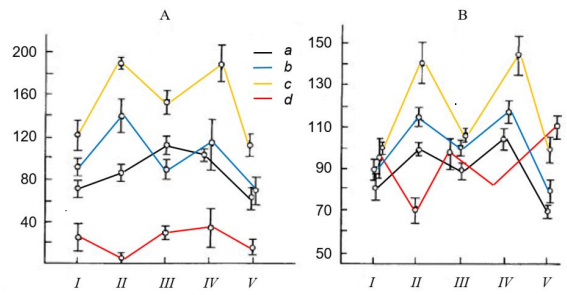
 DownLoad:
DownLoad: 